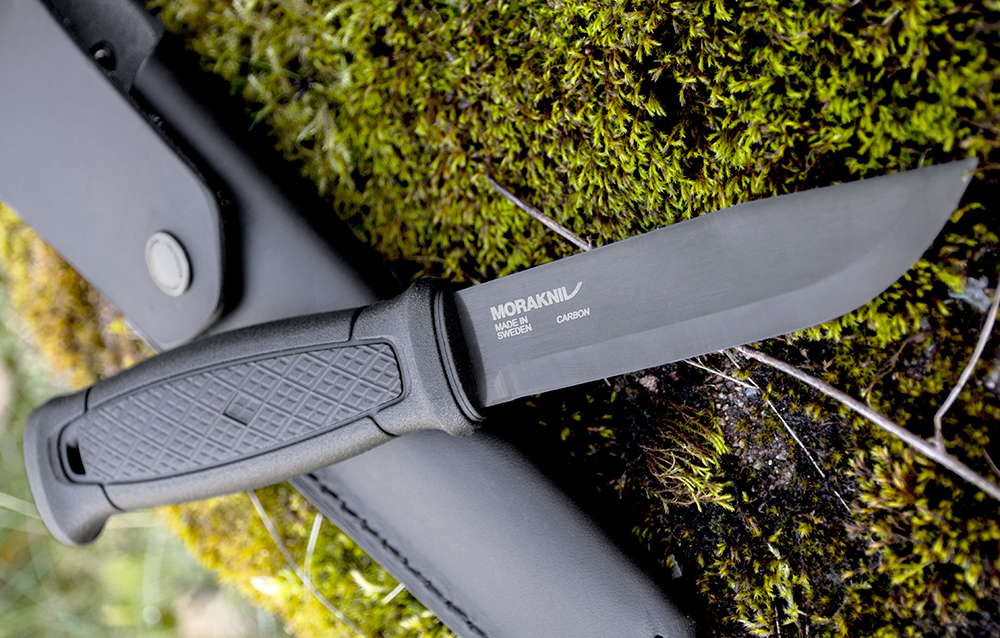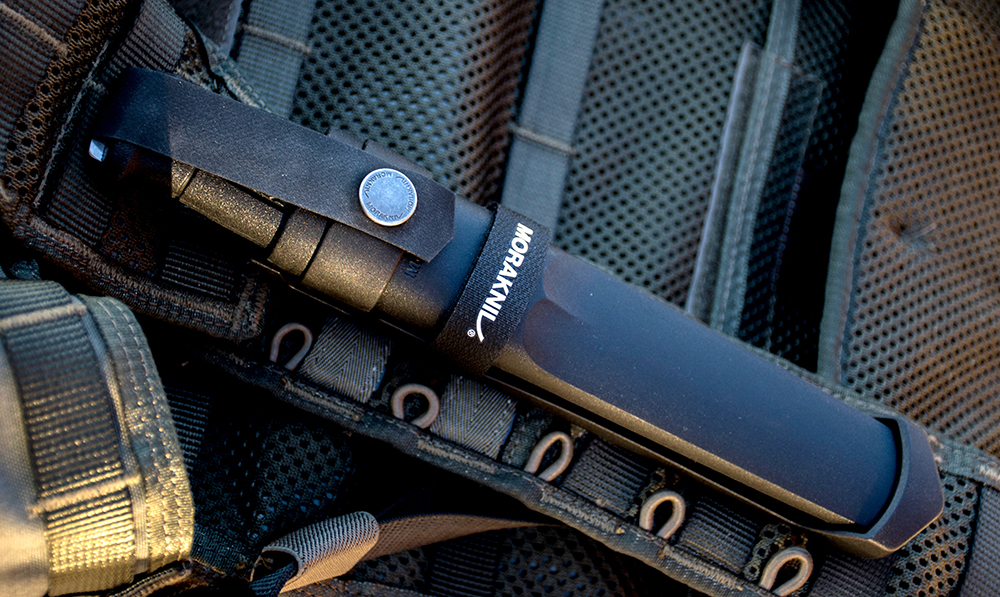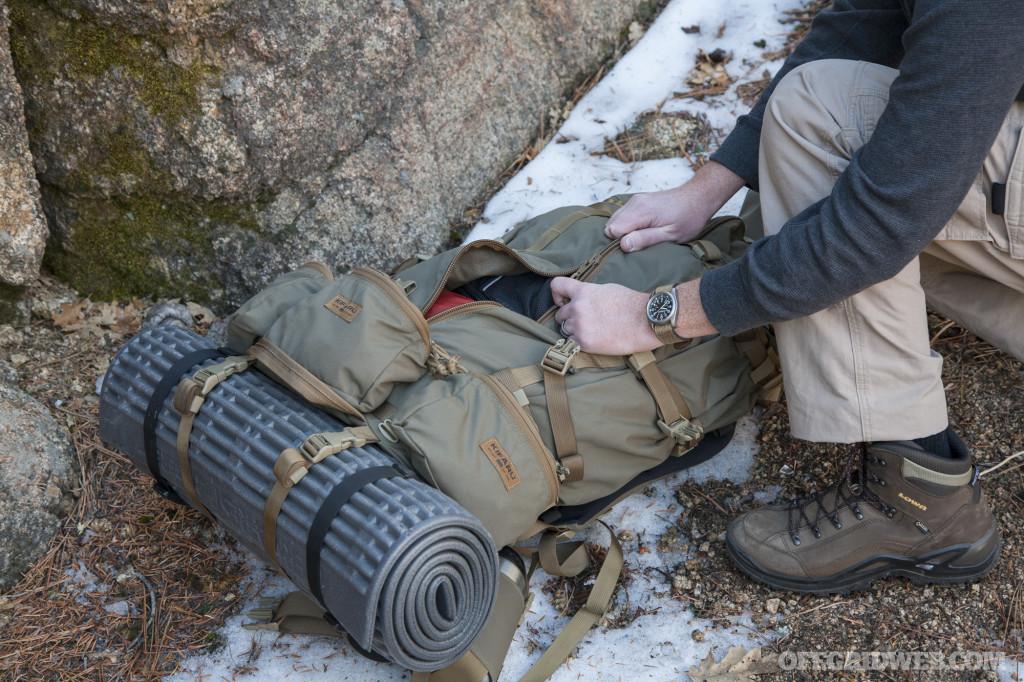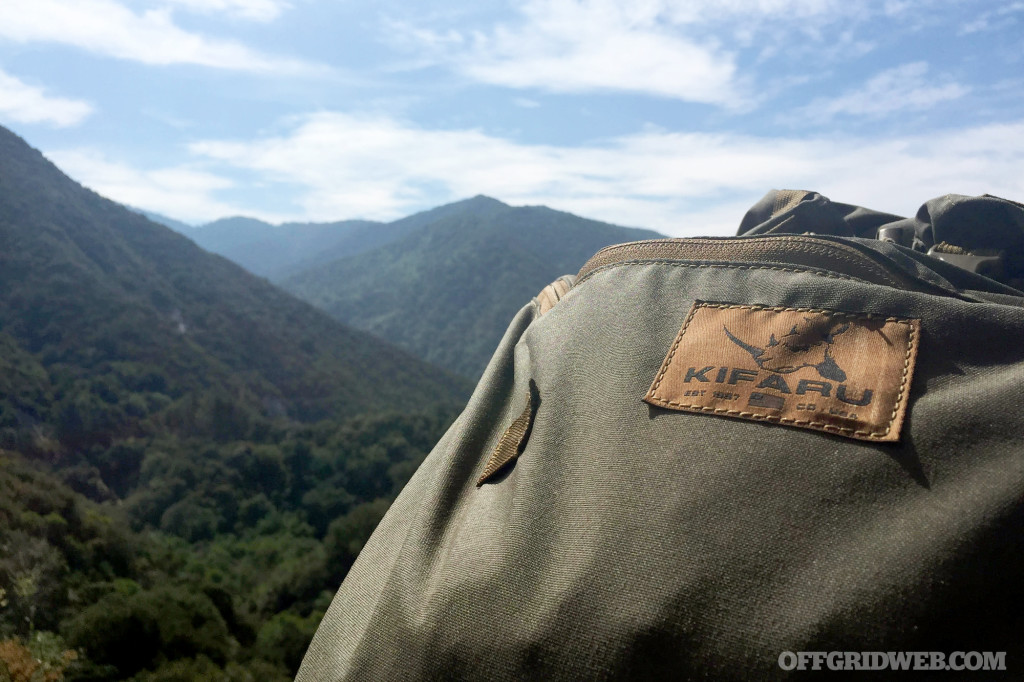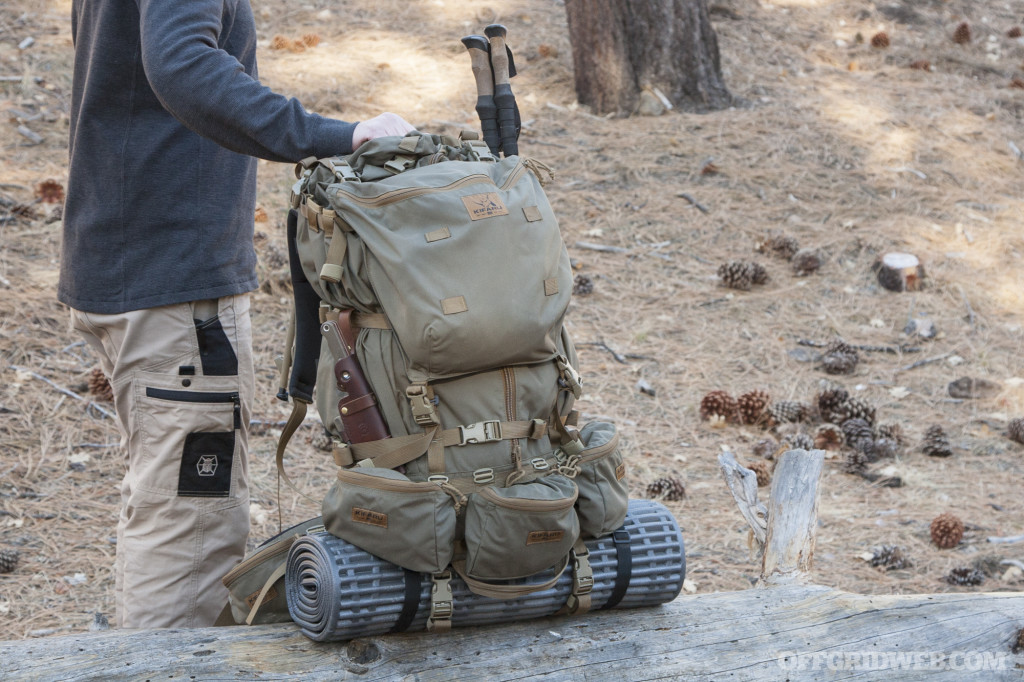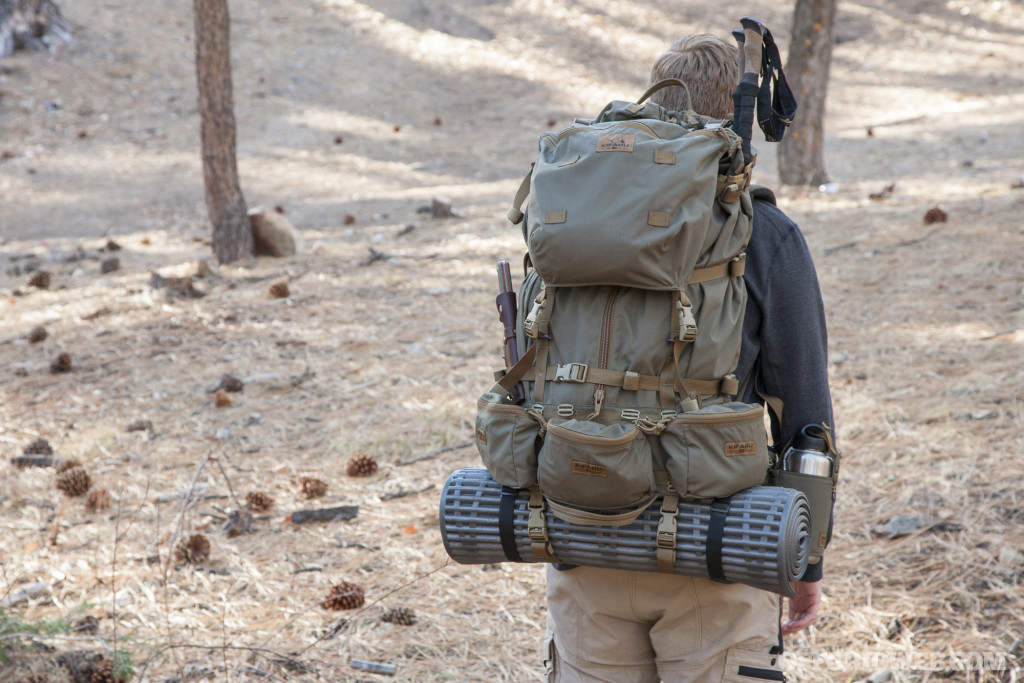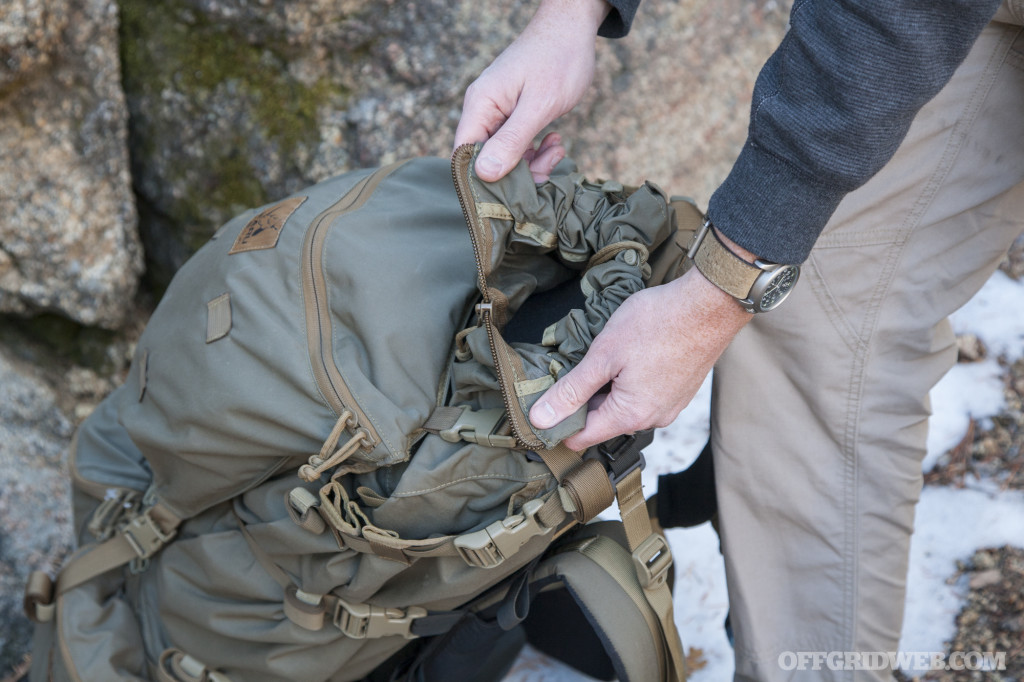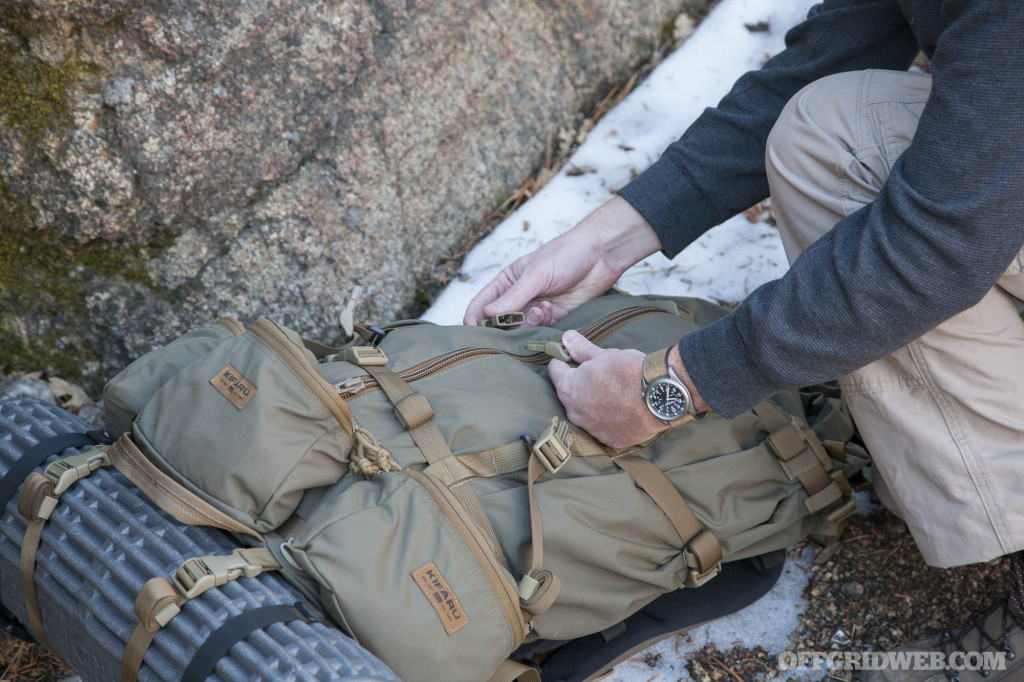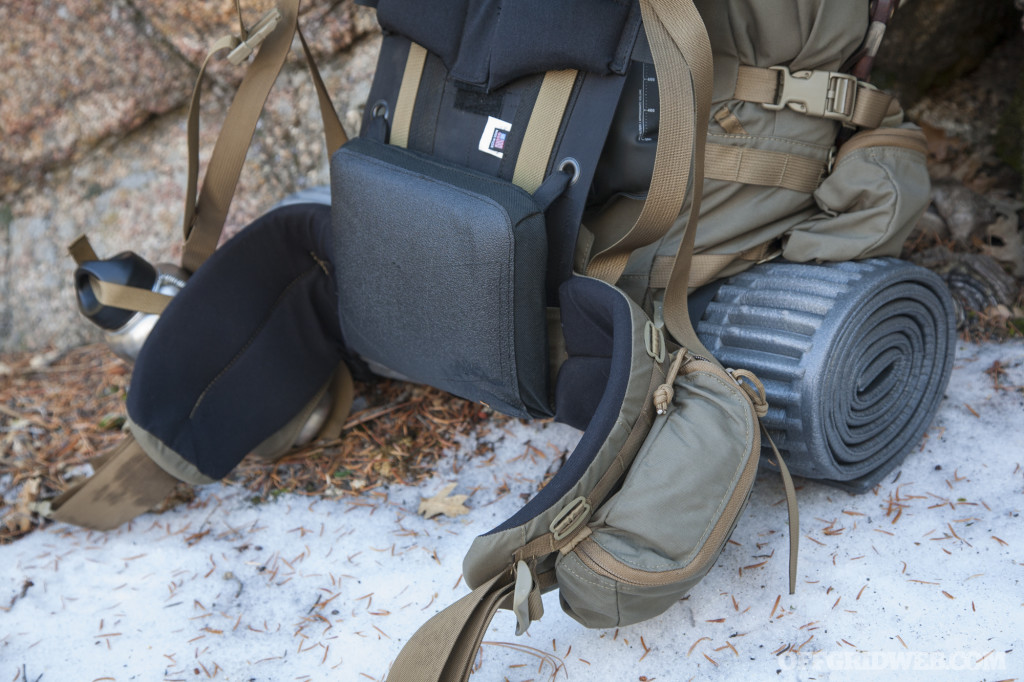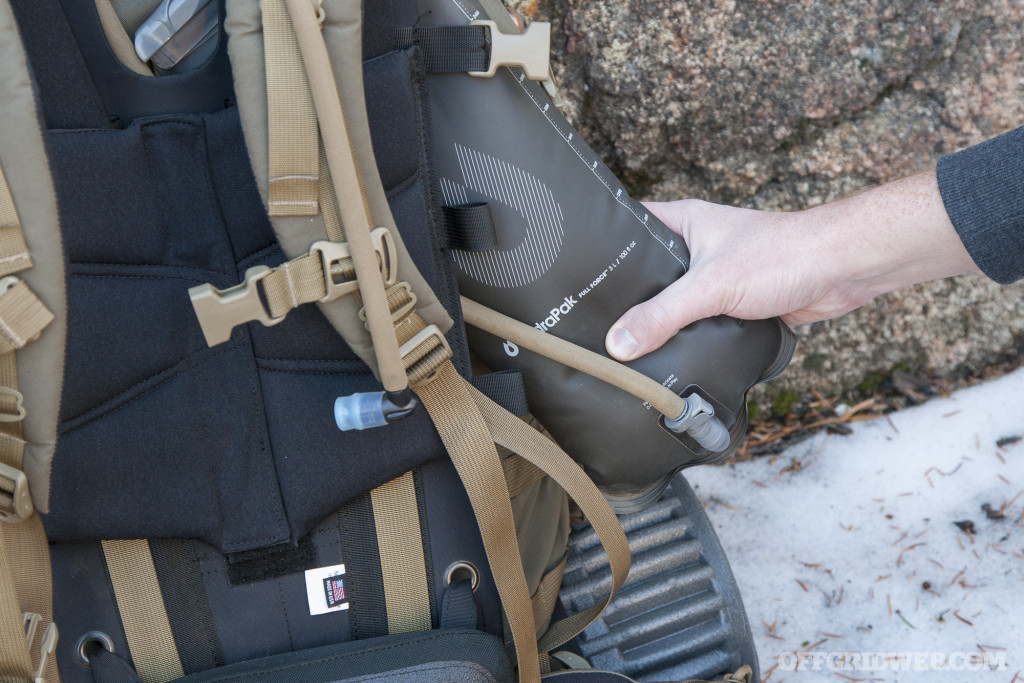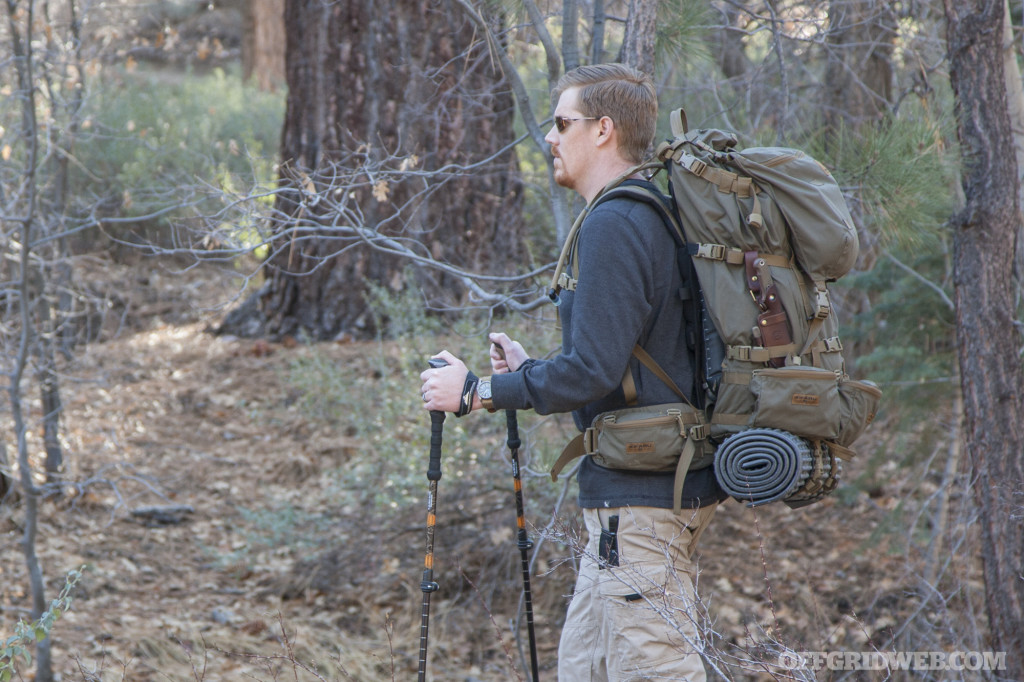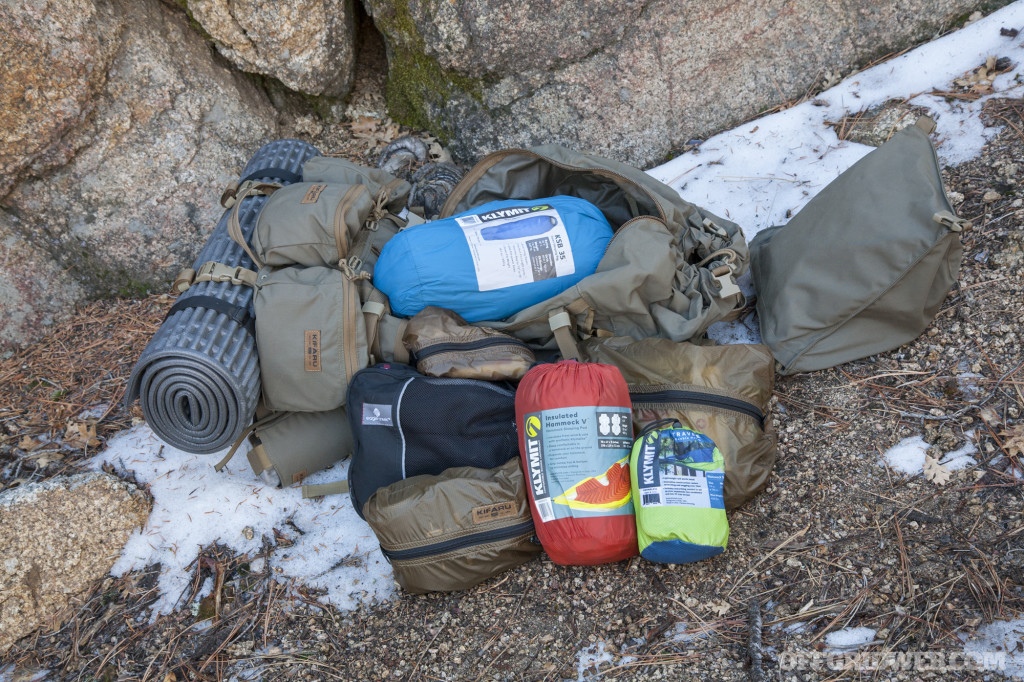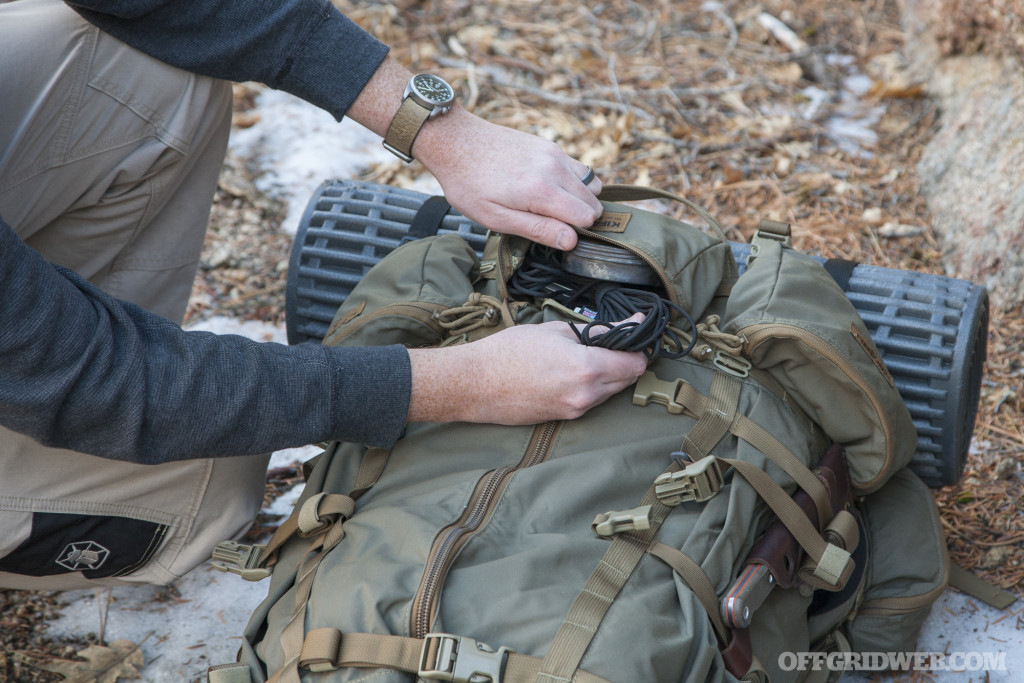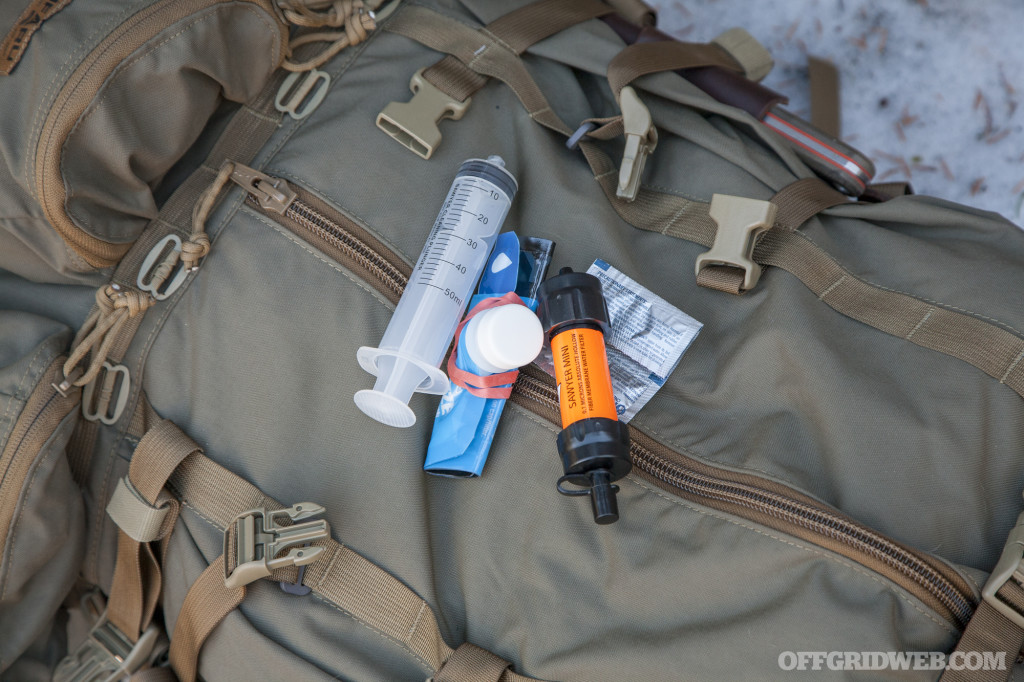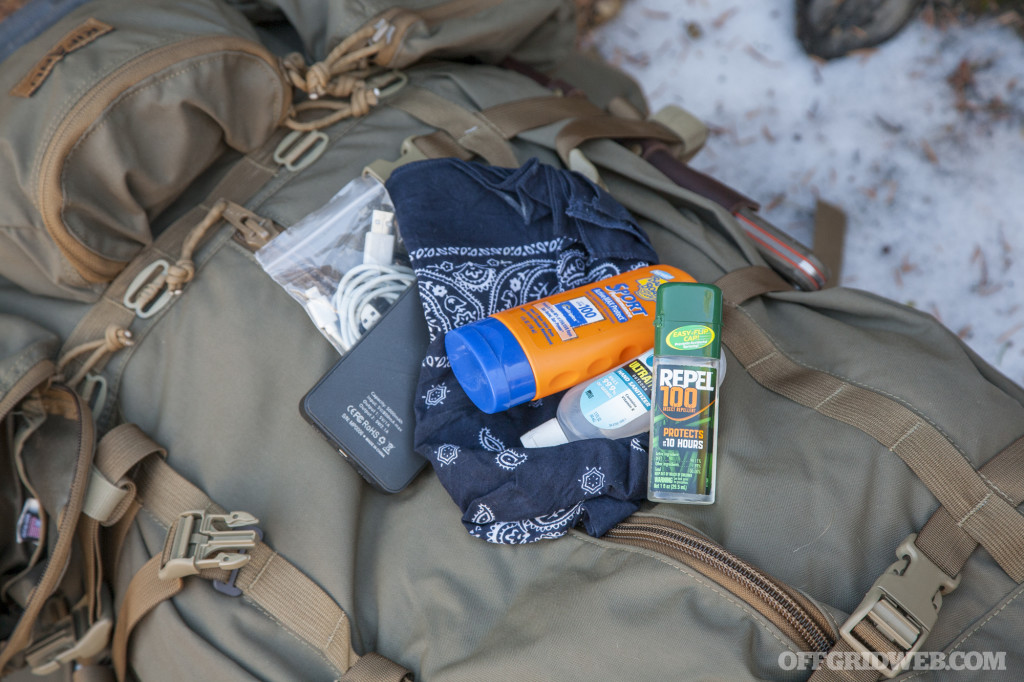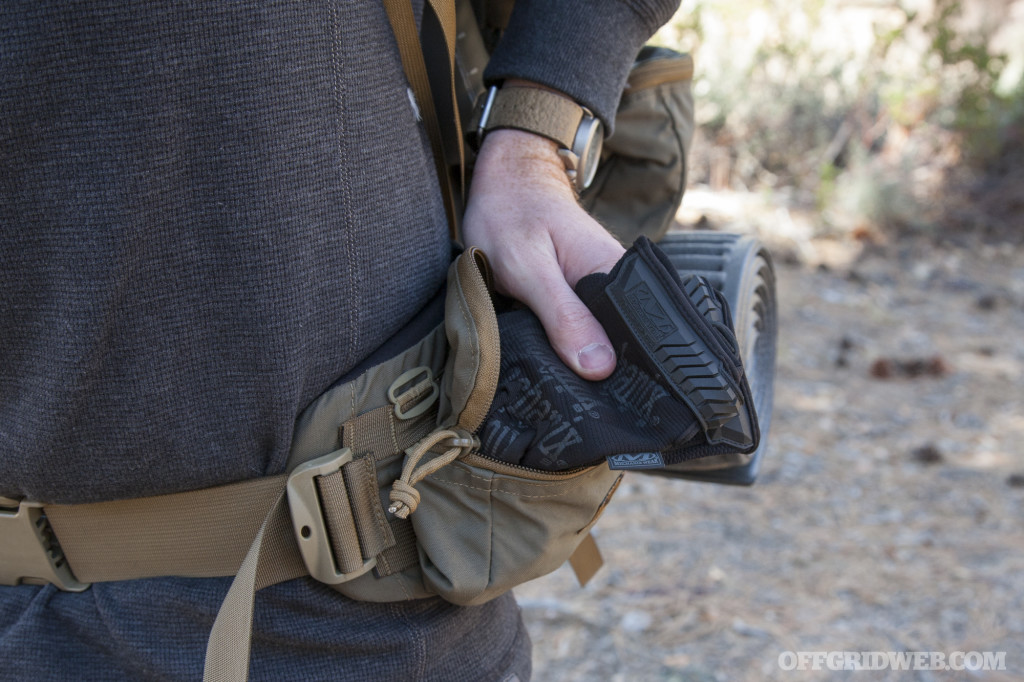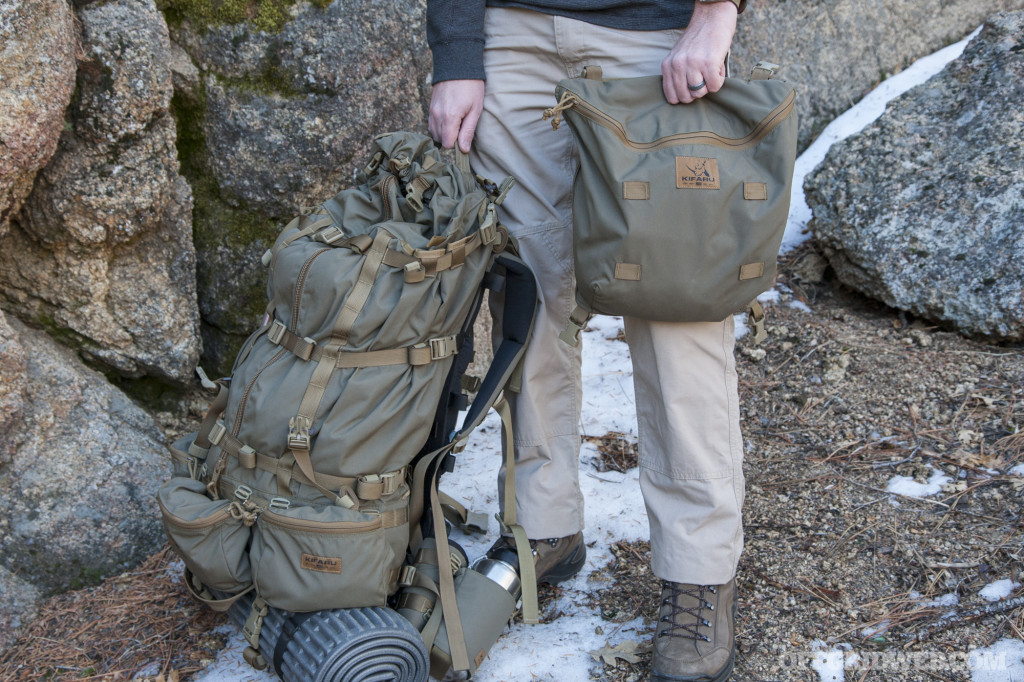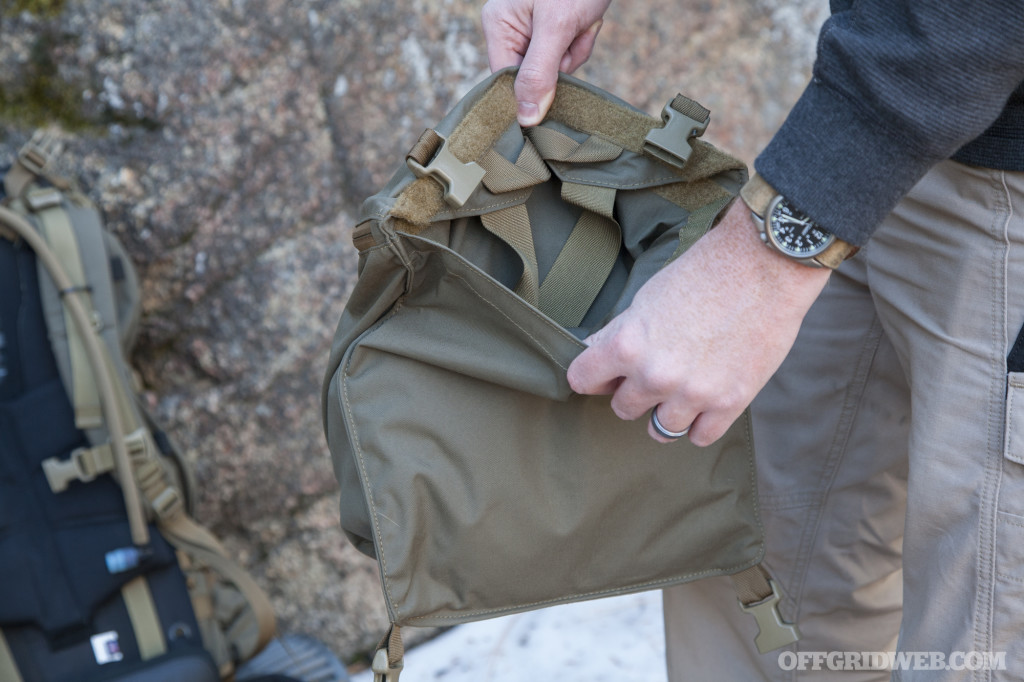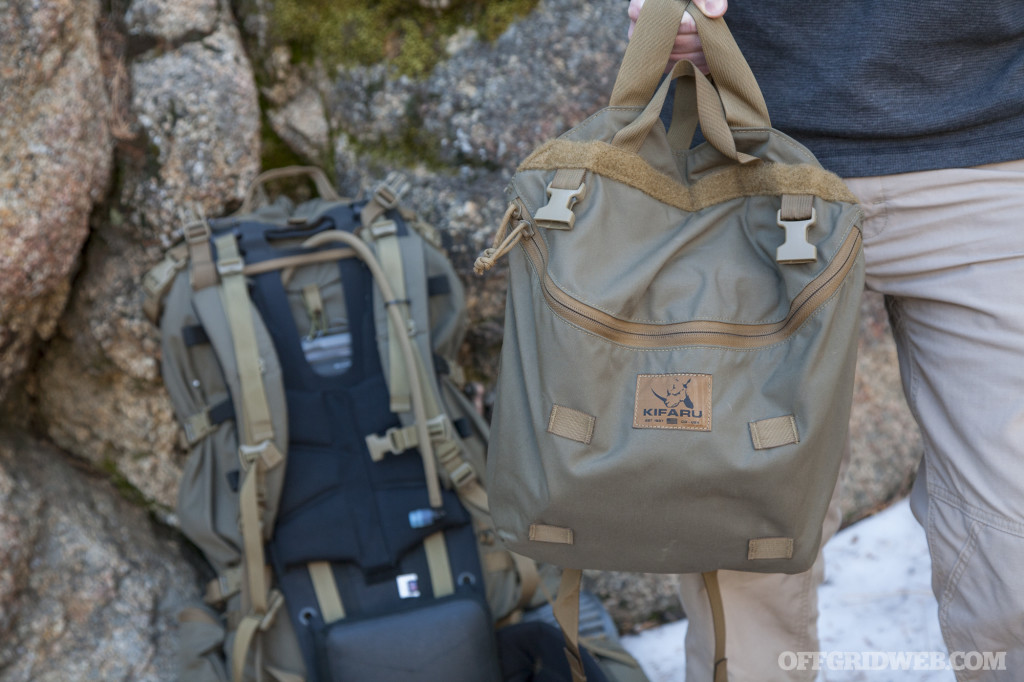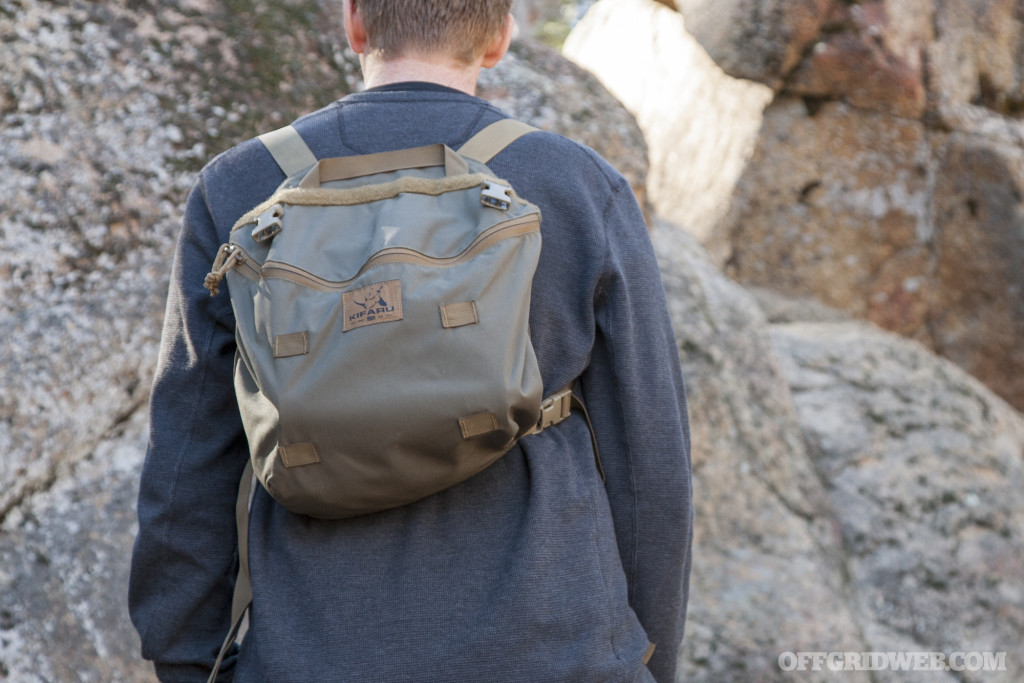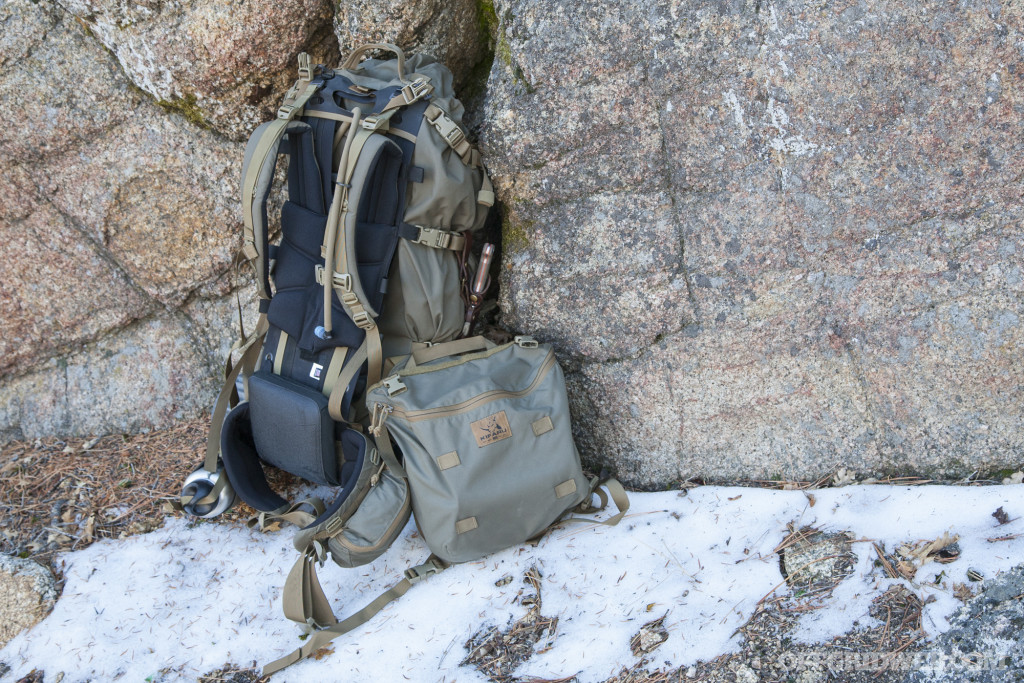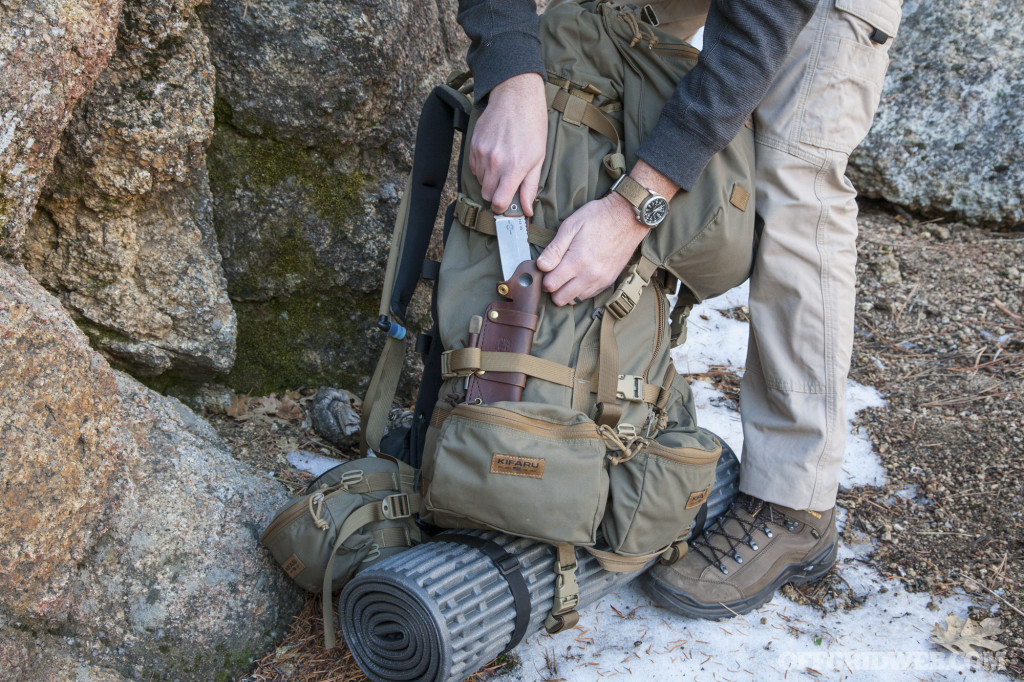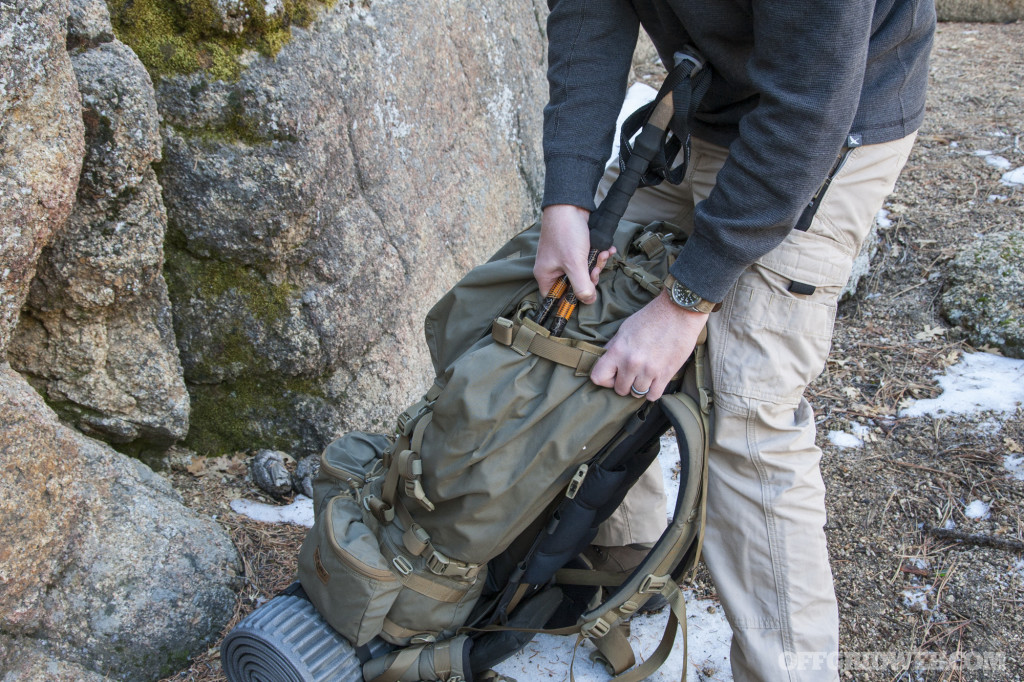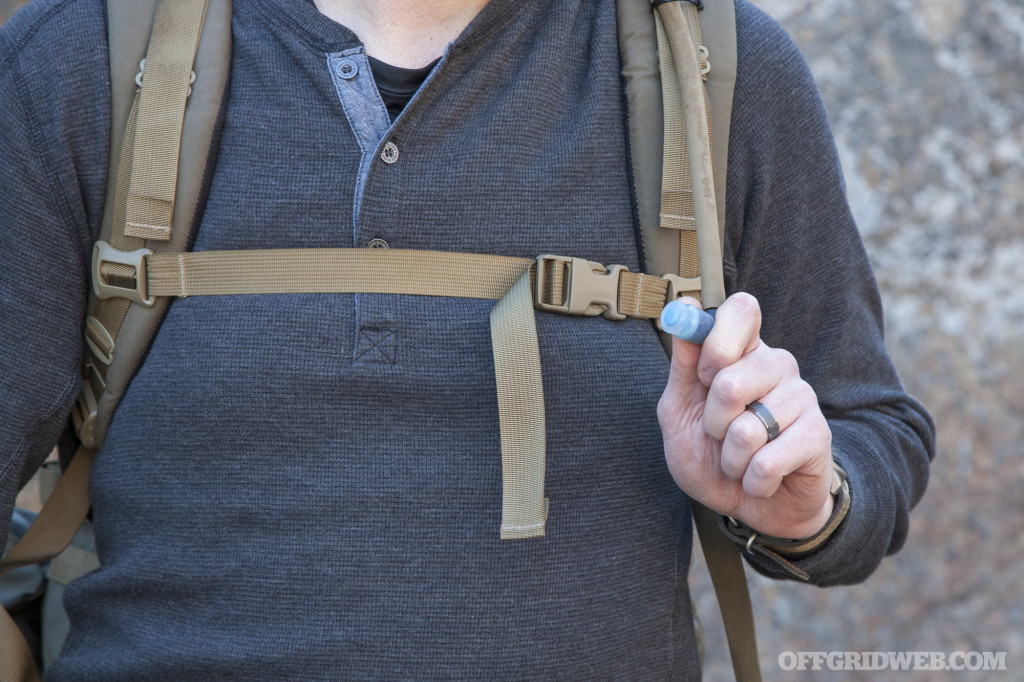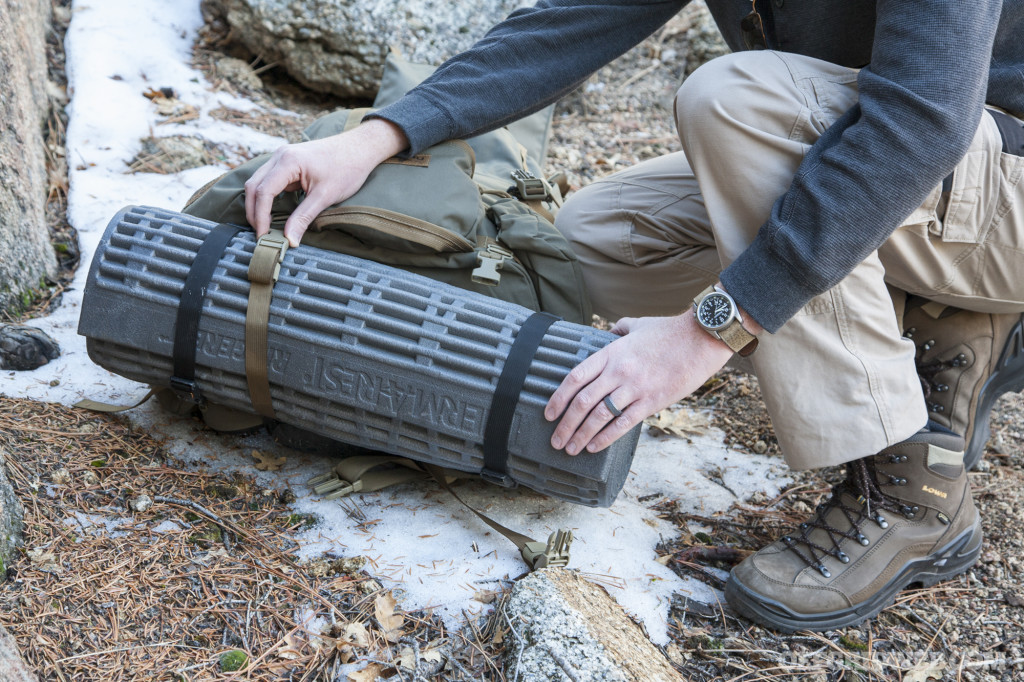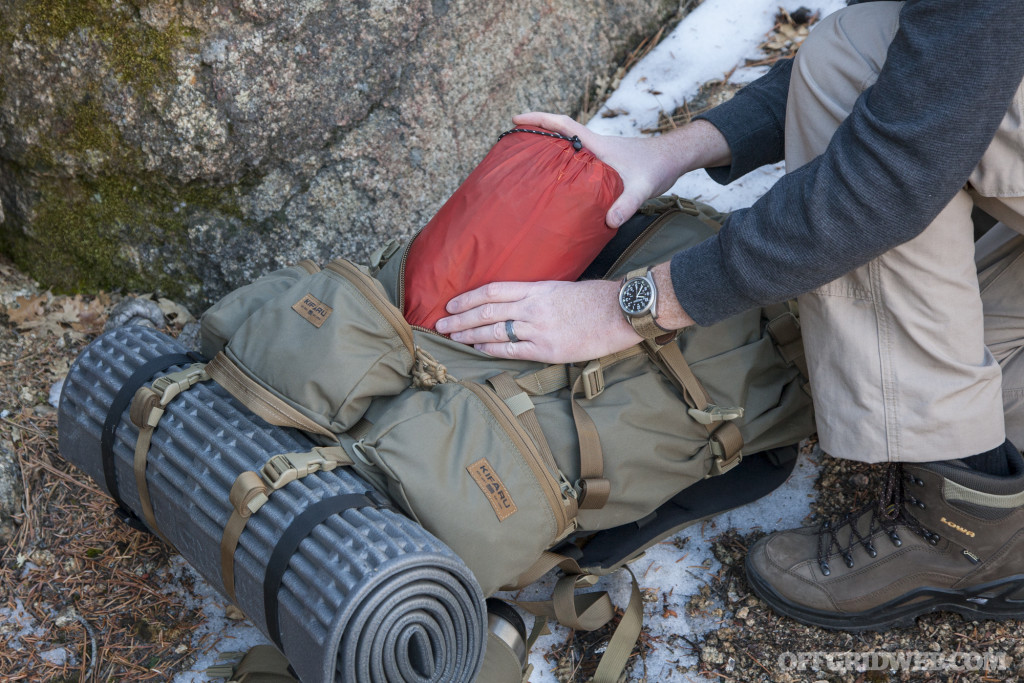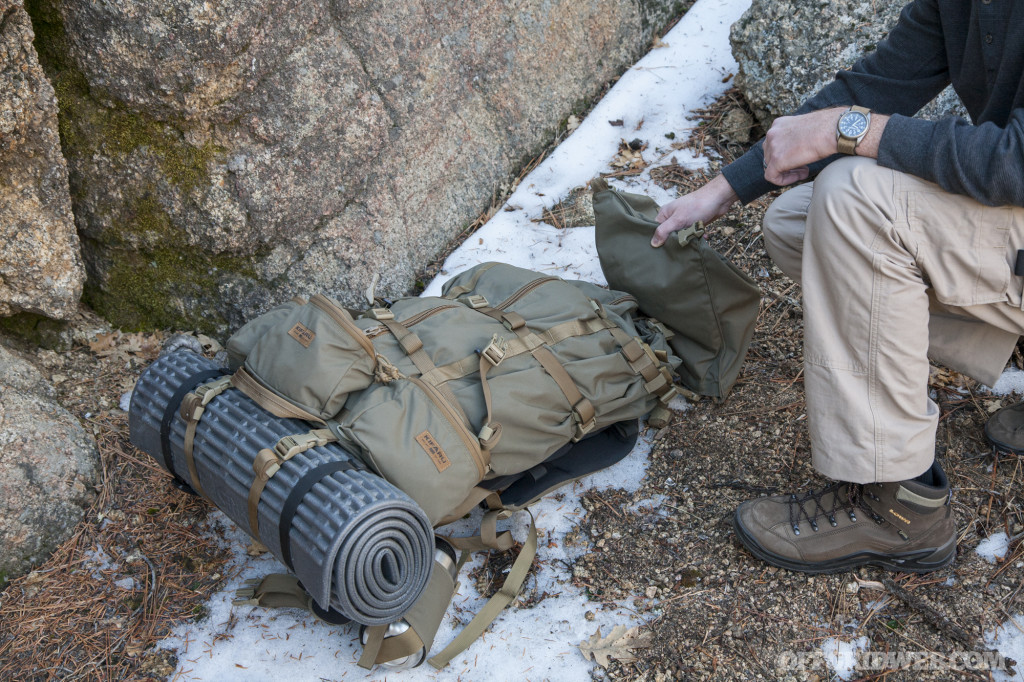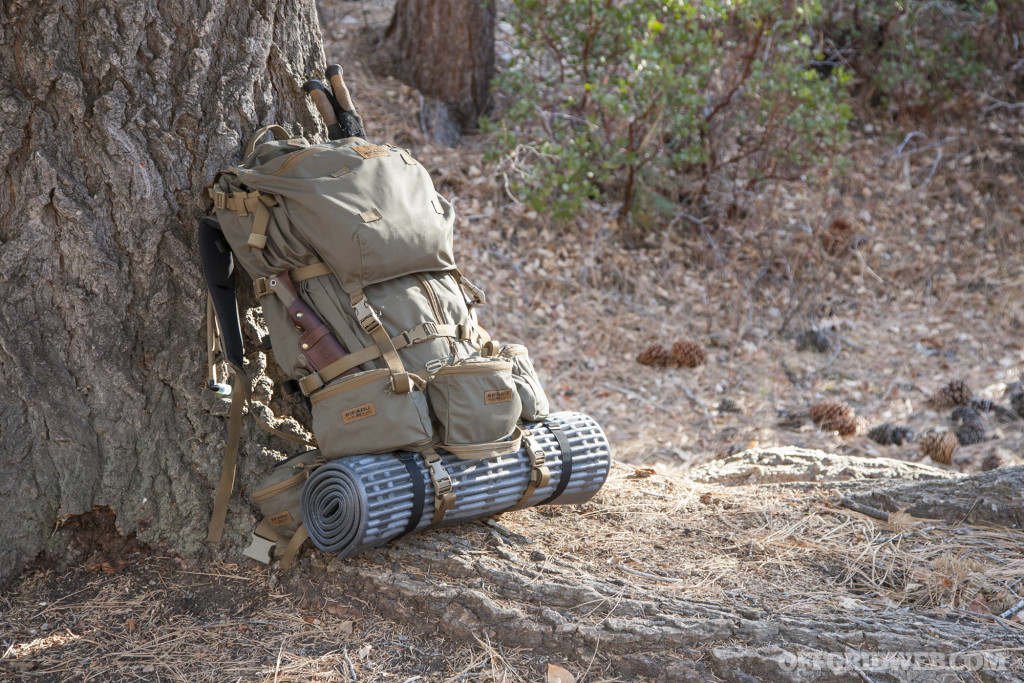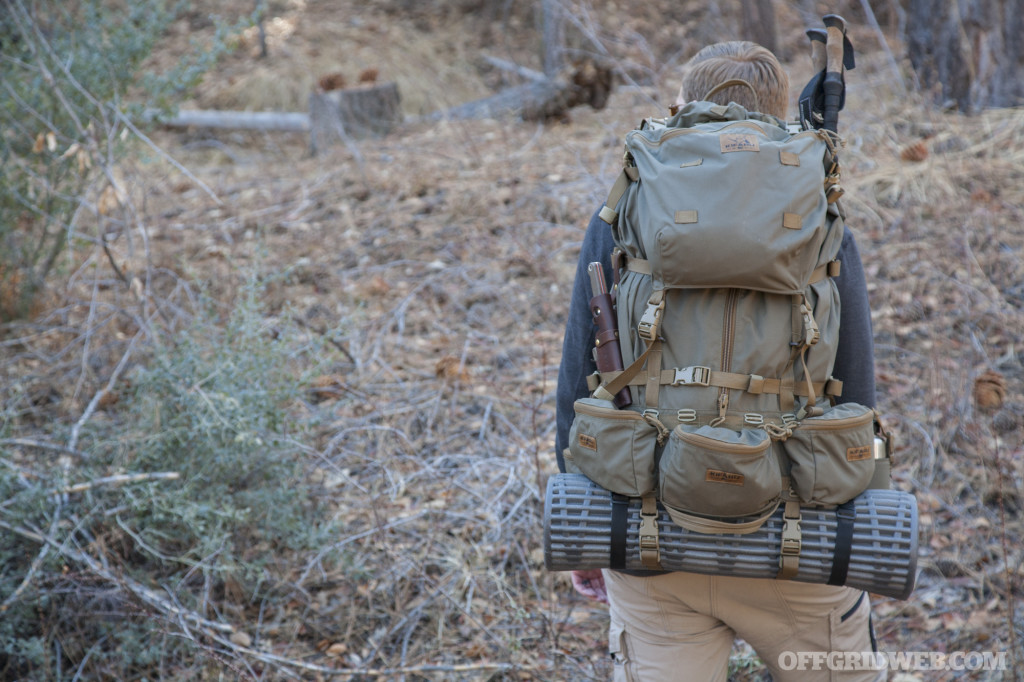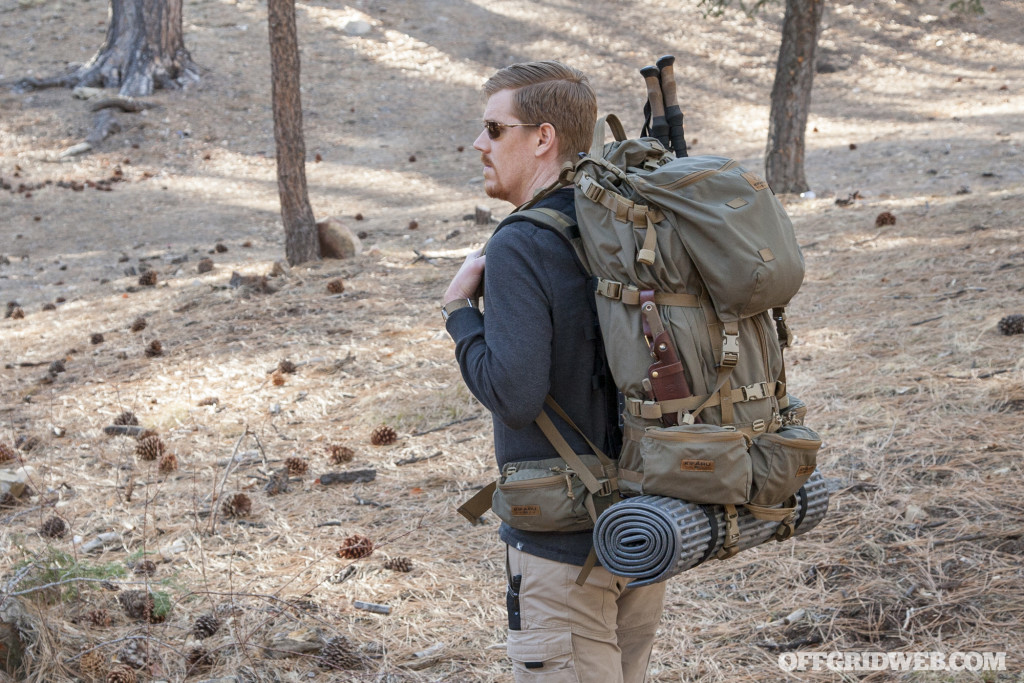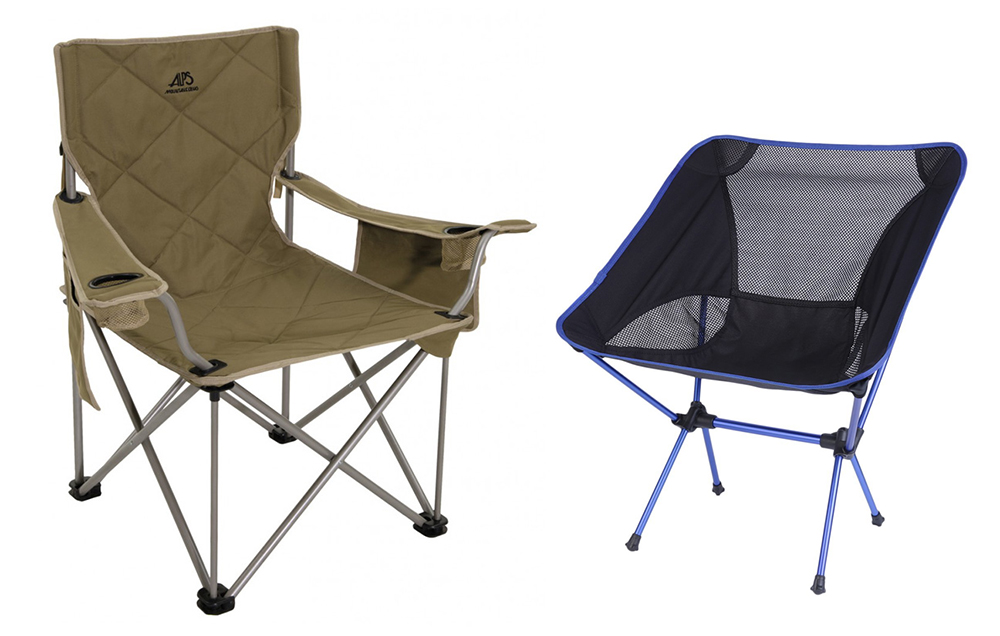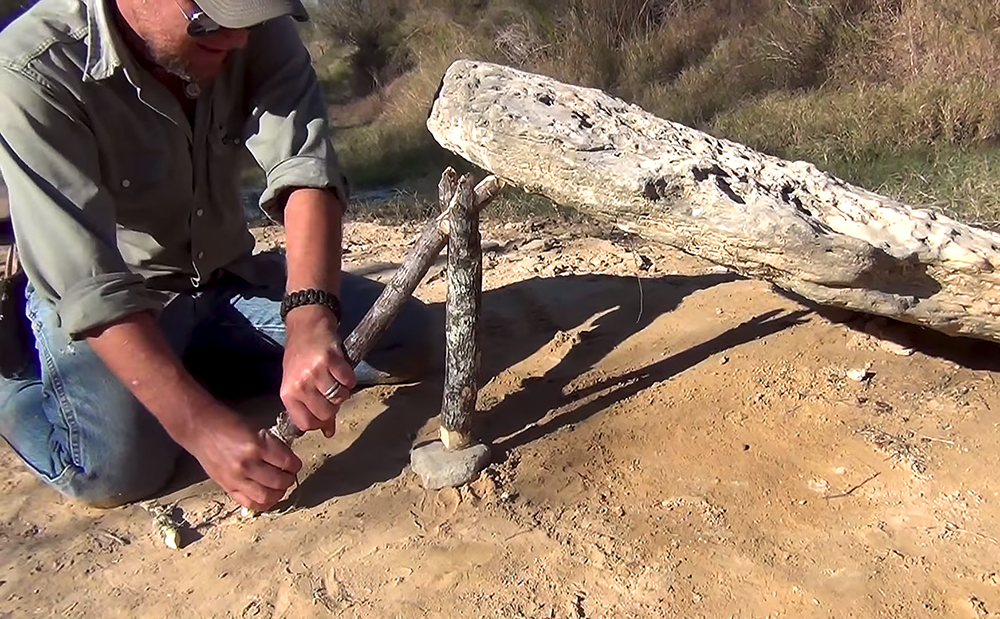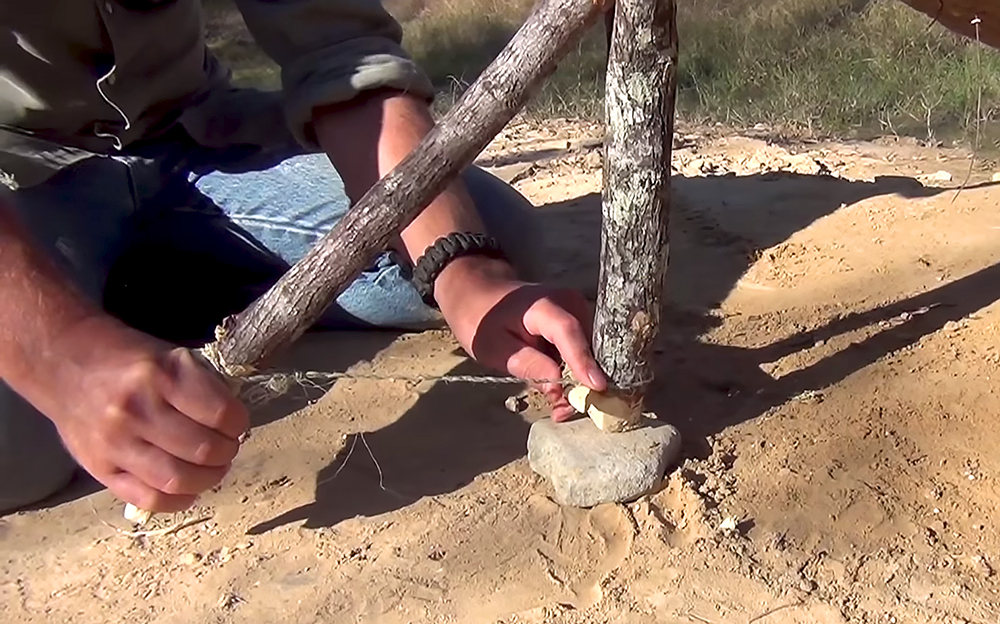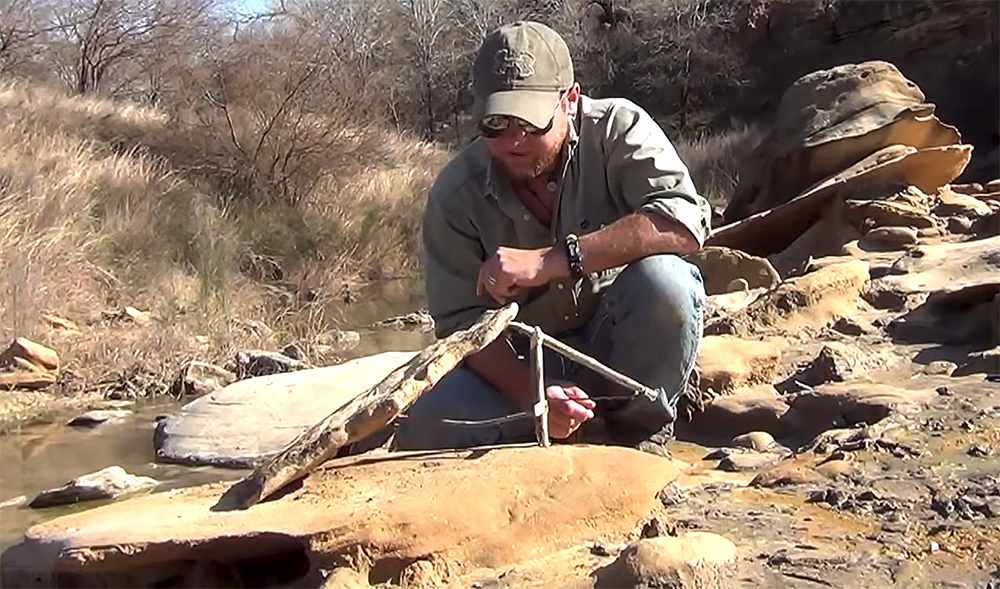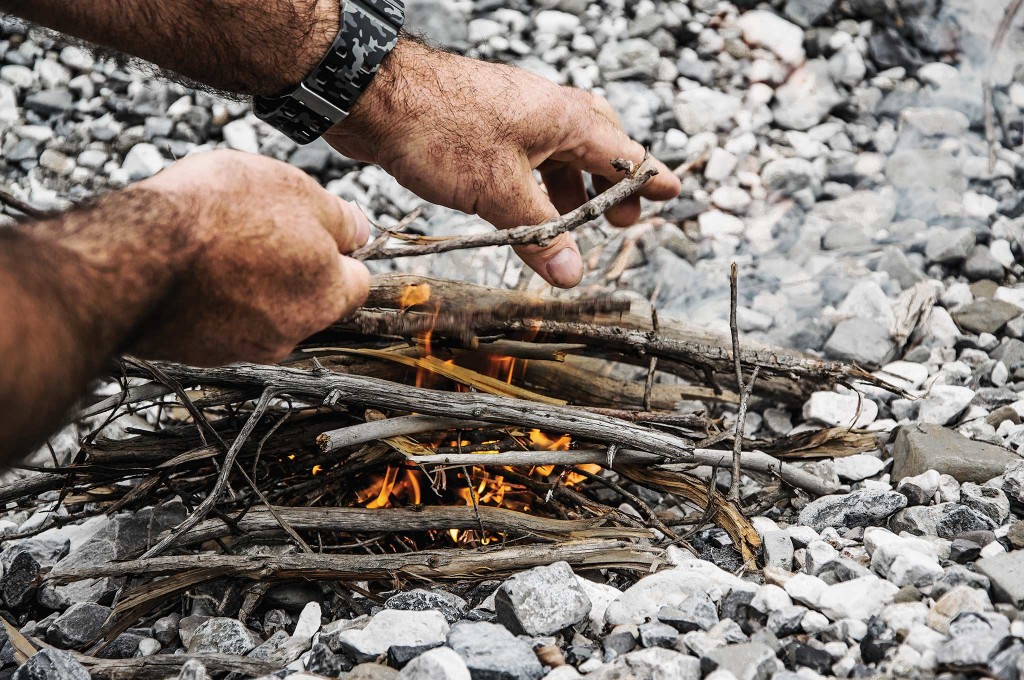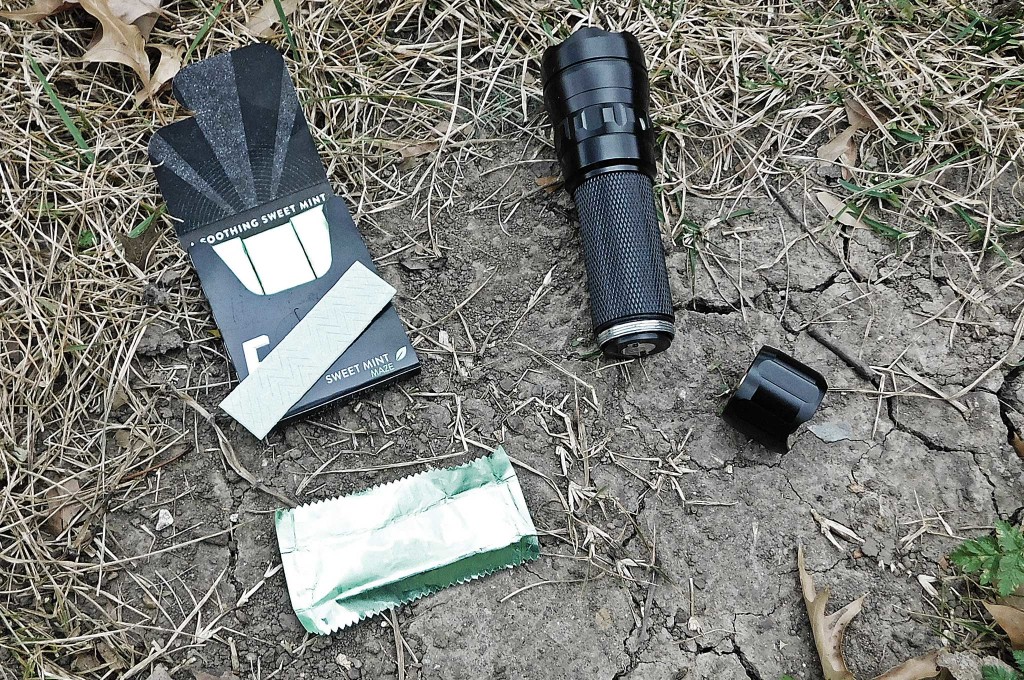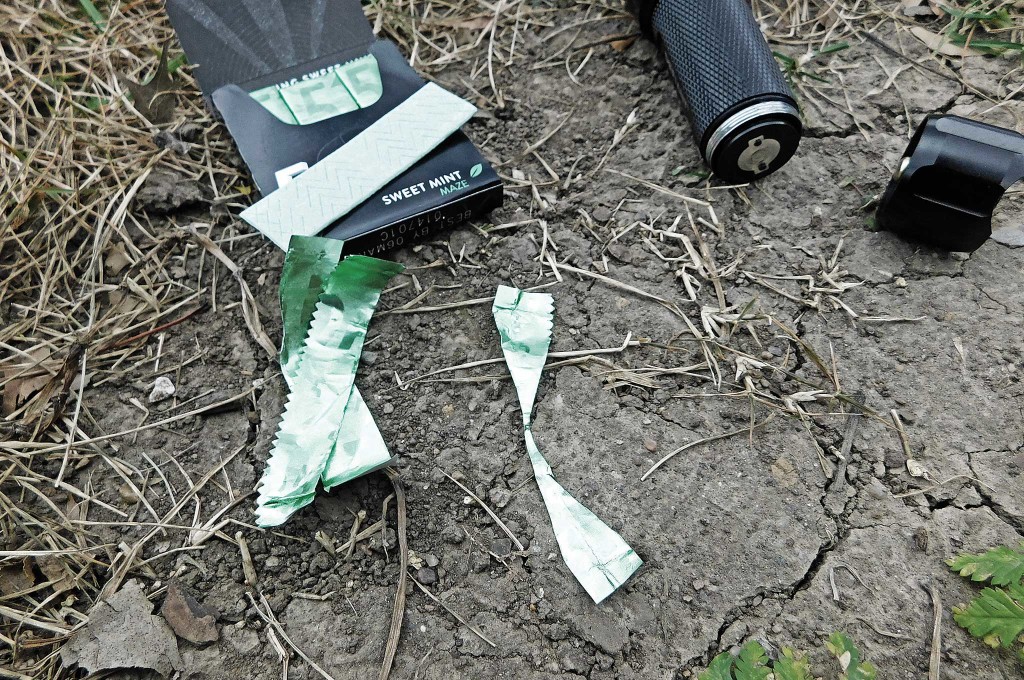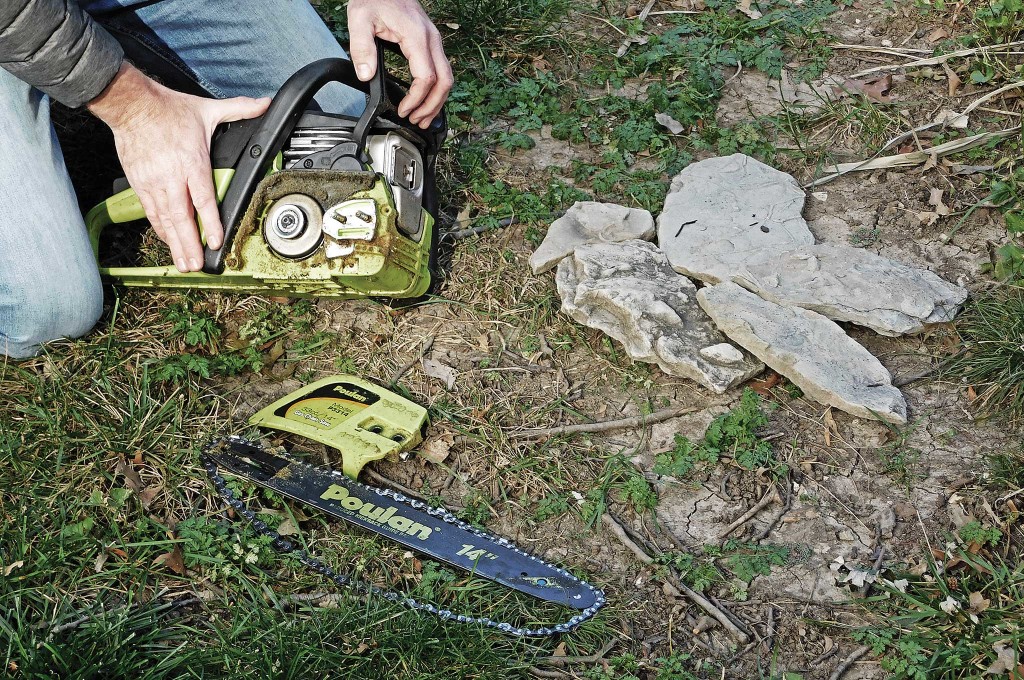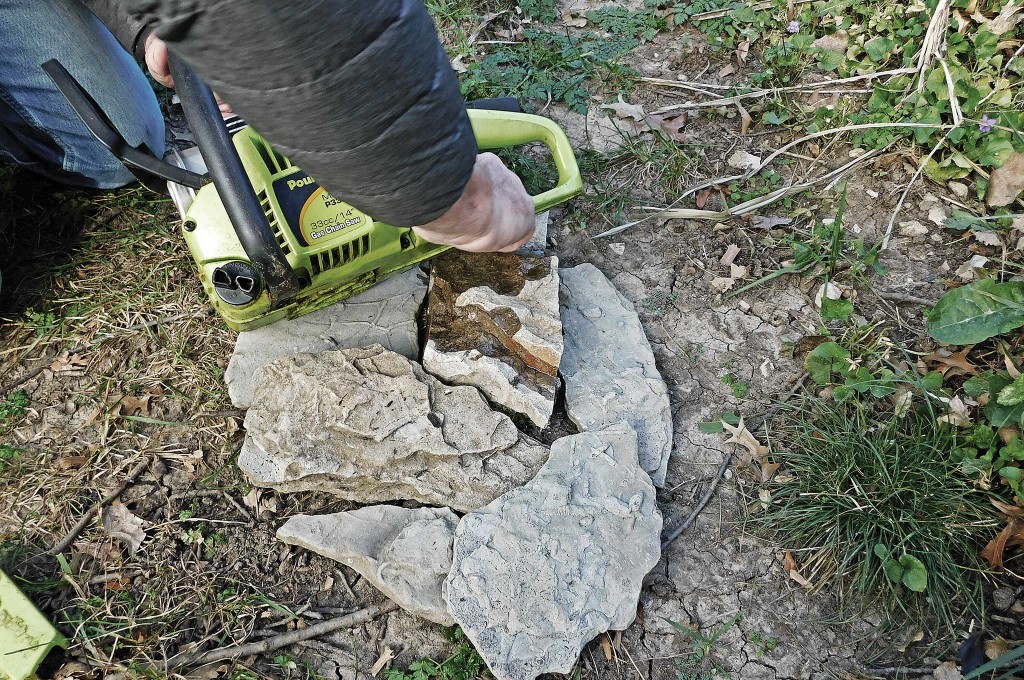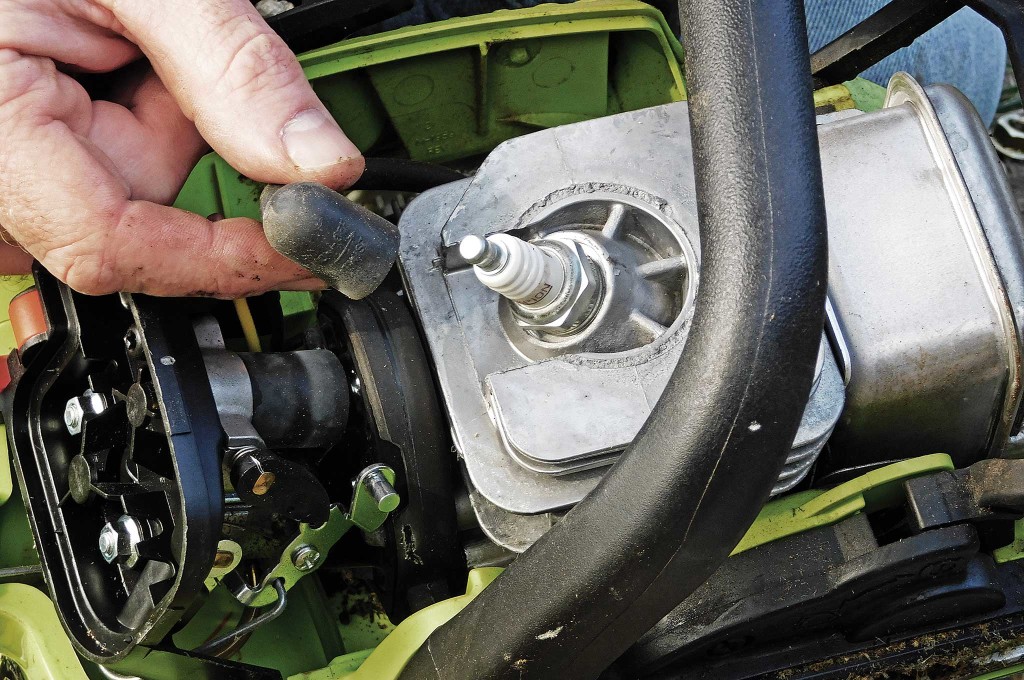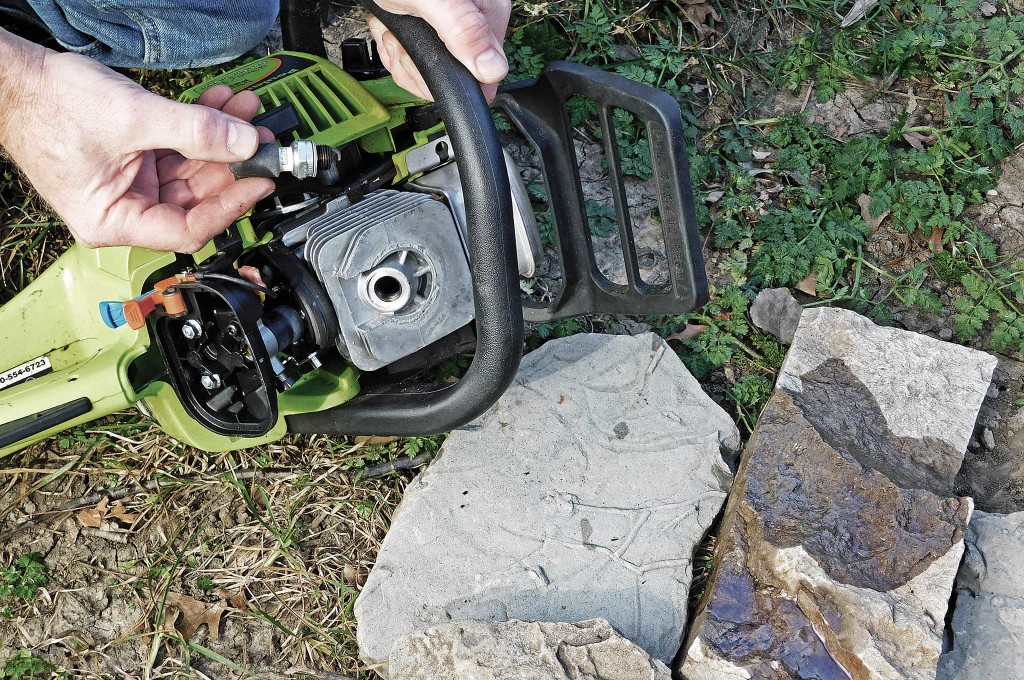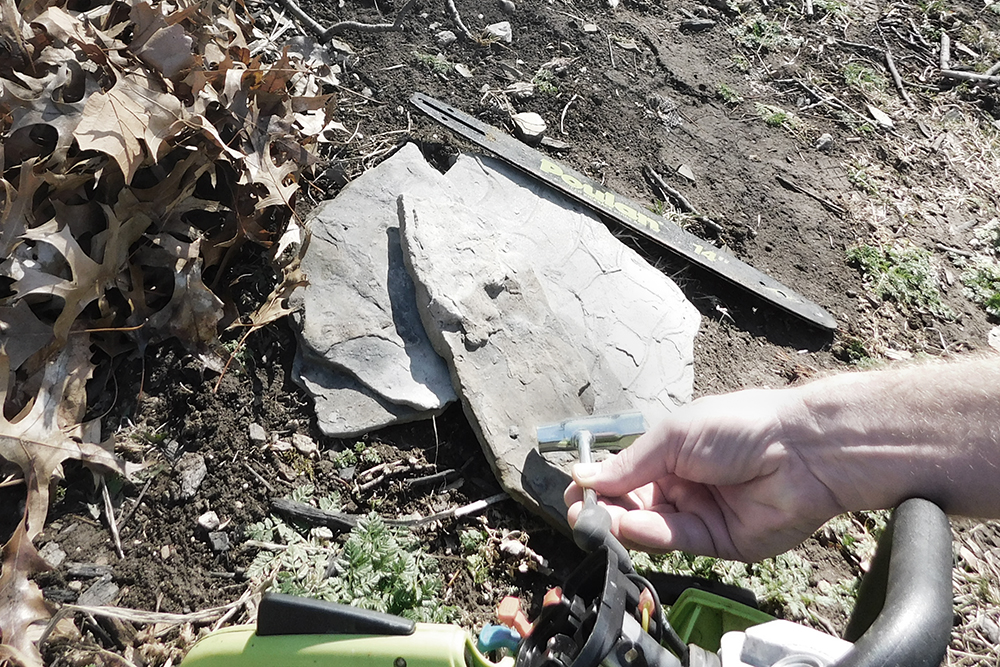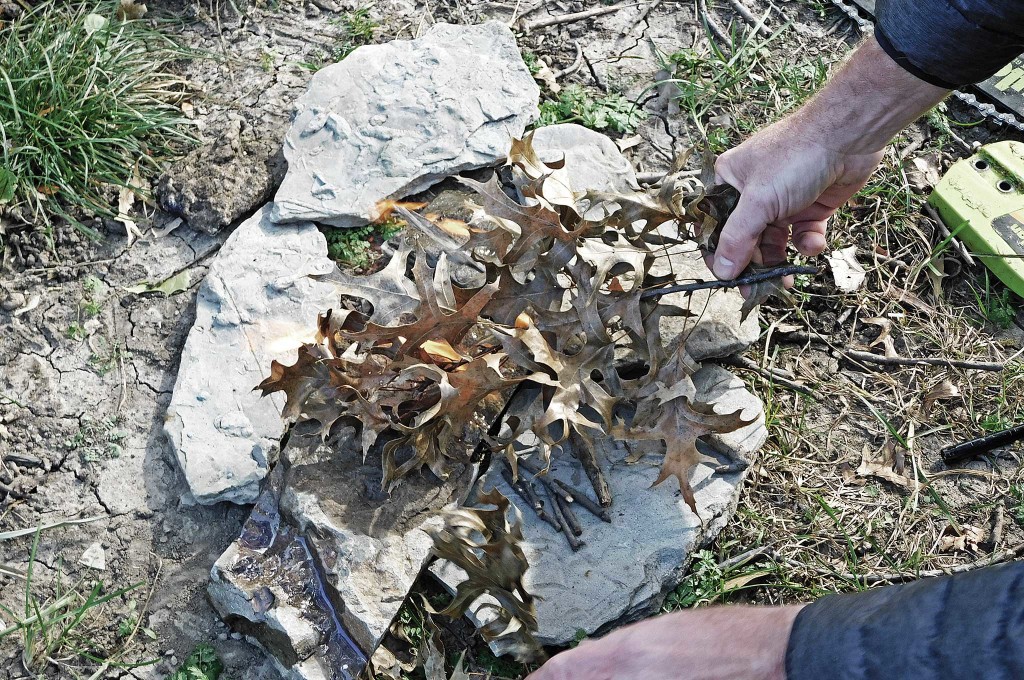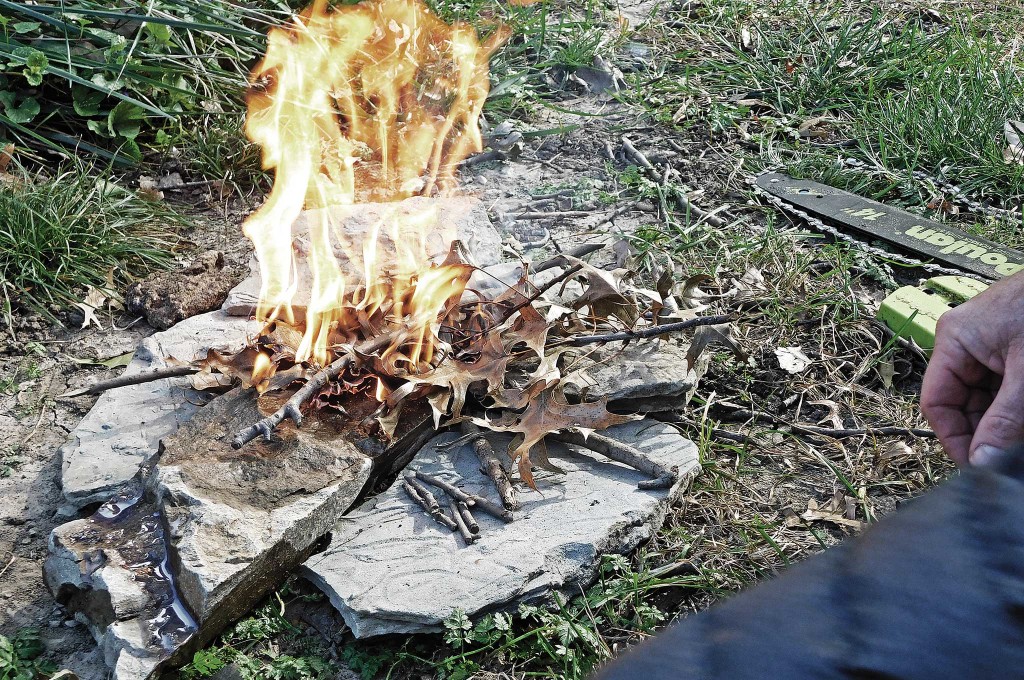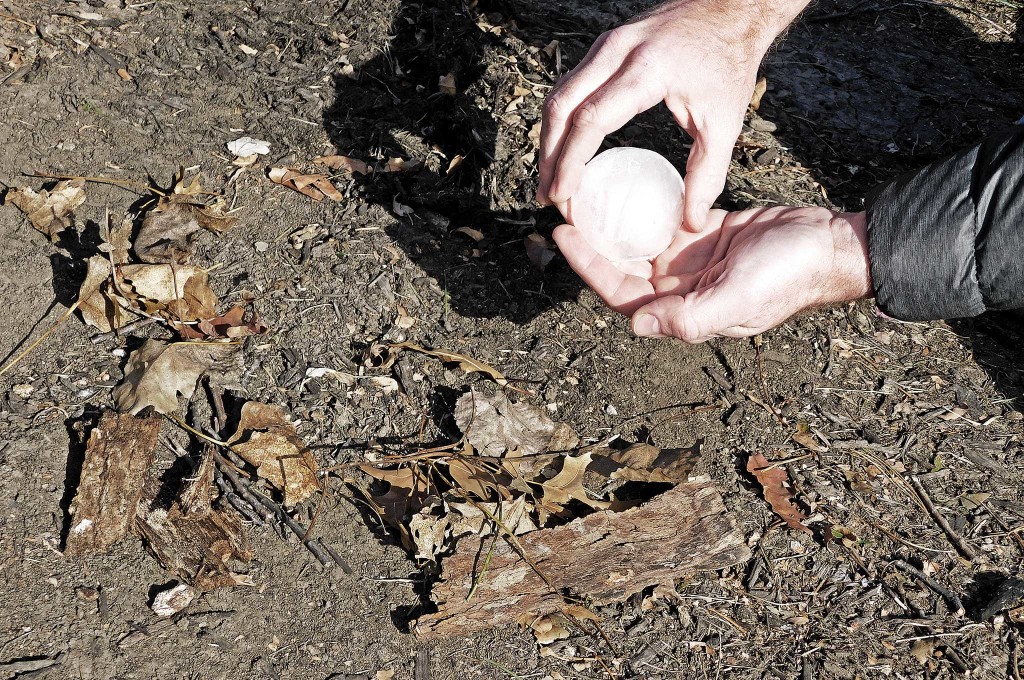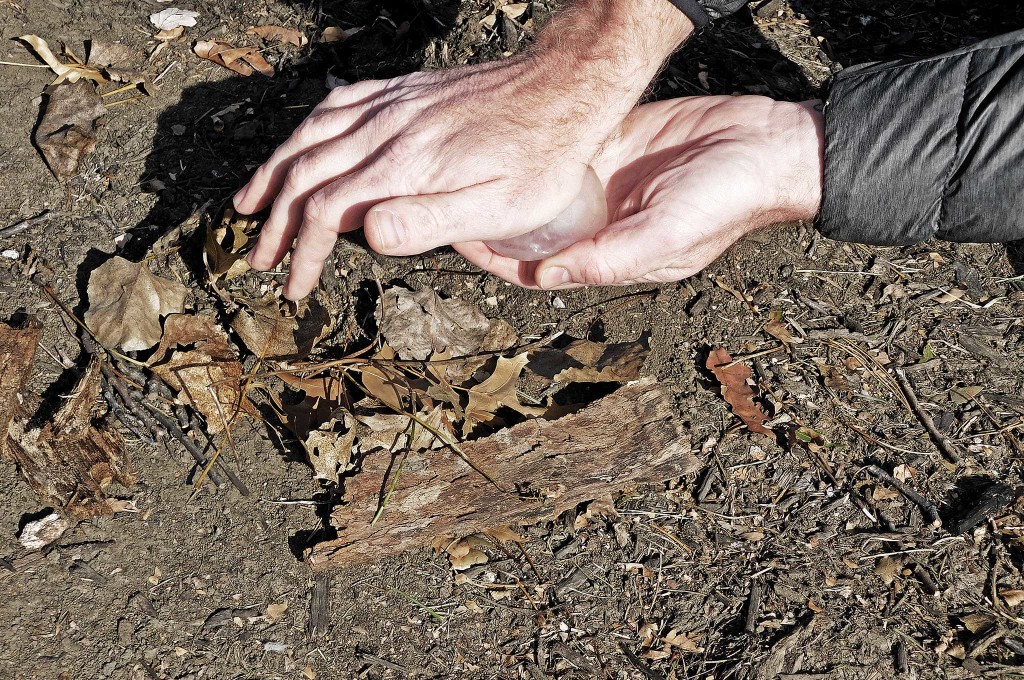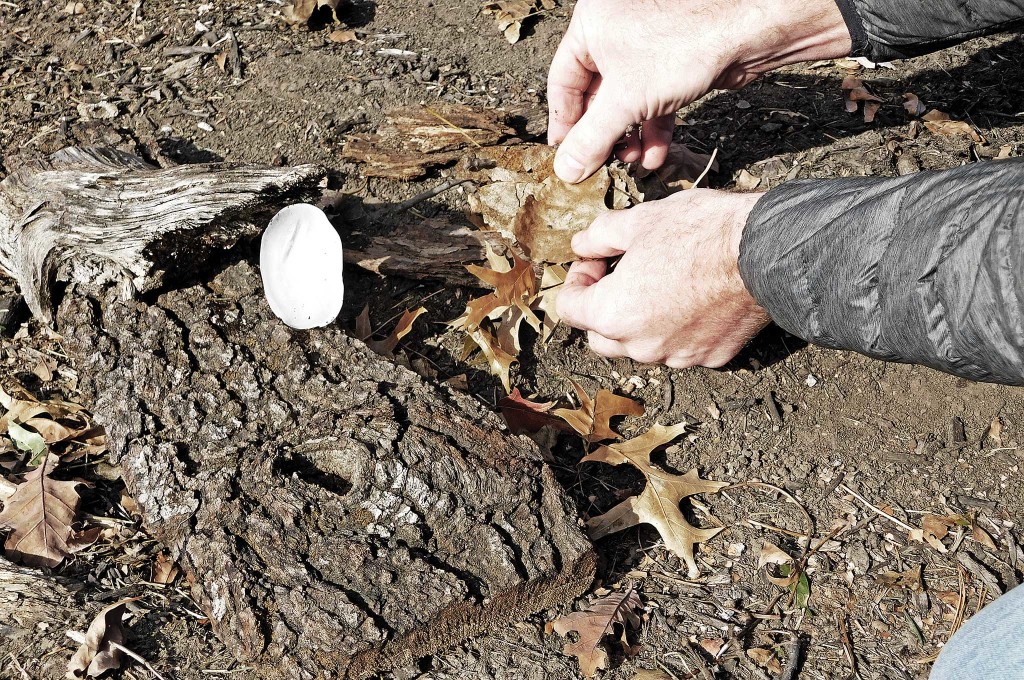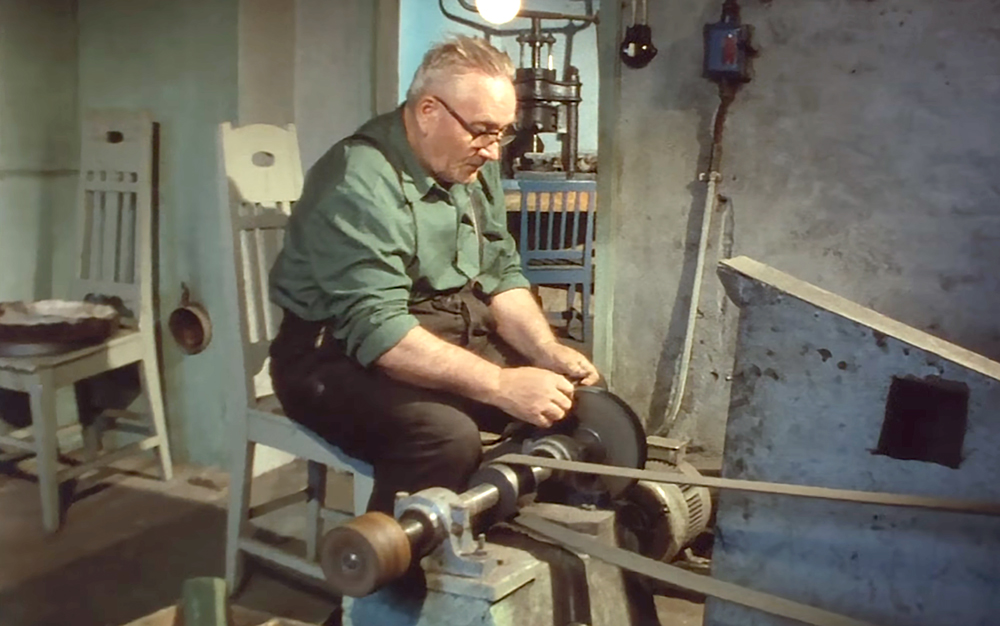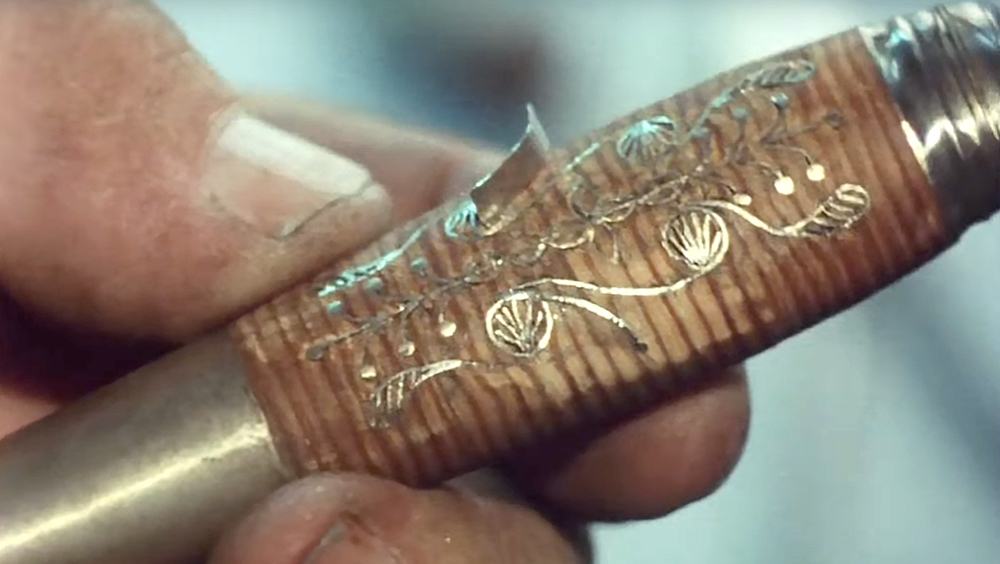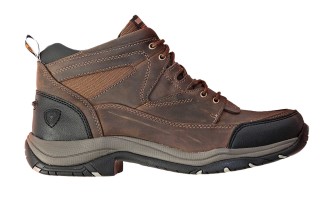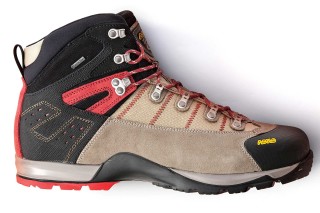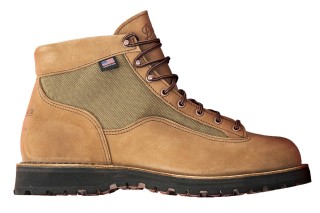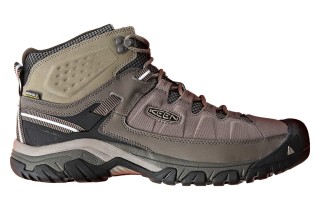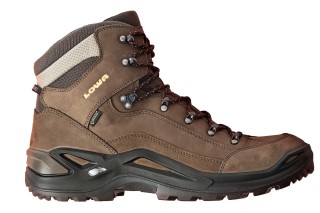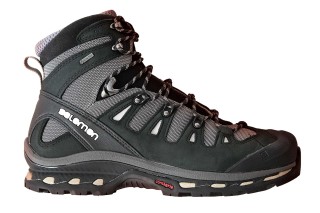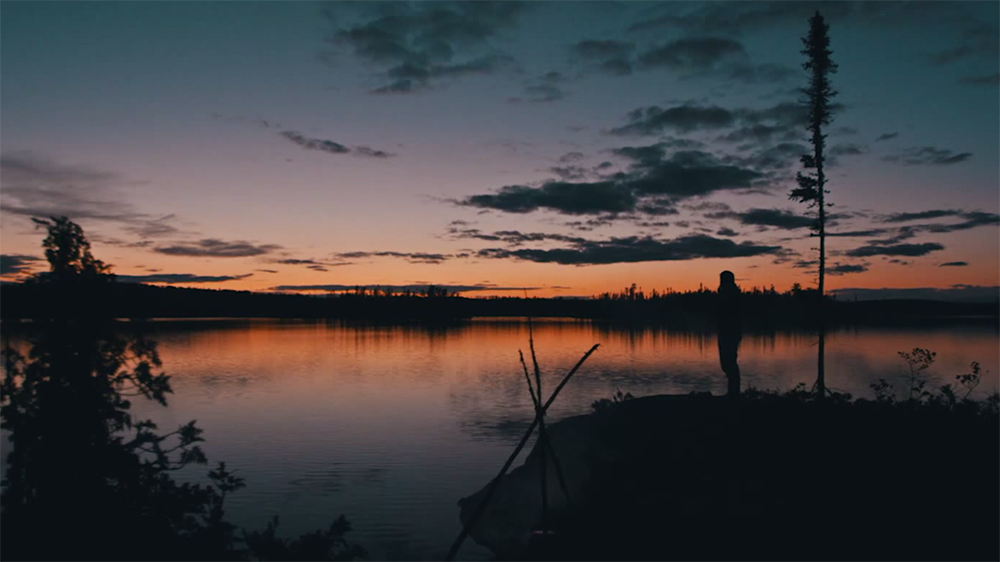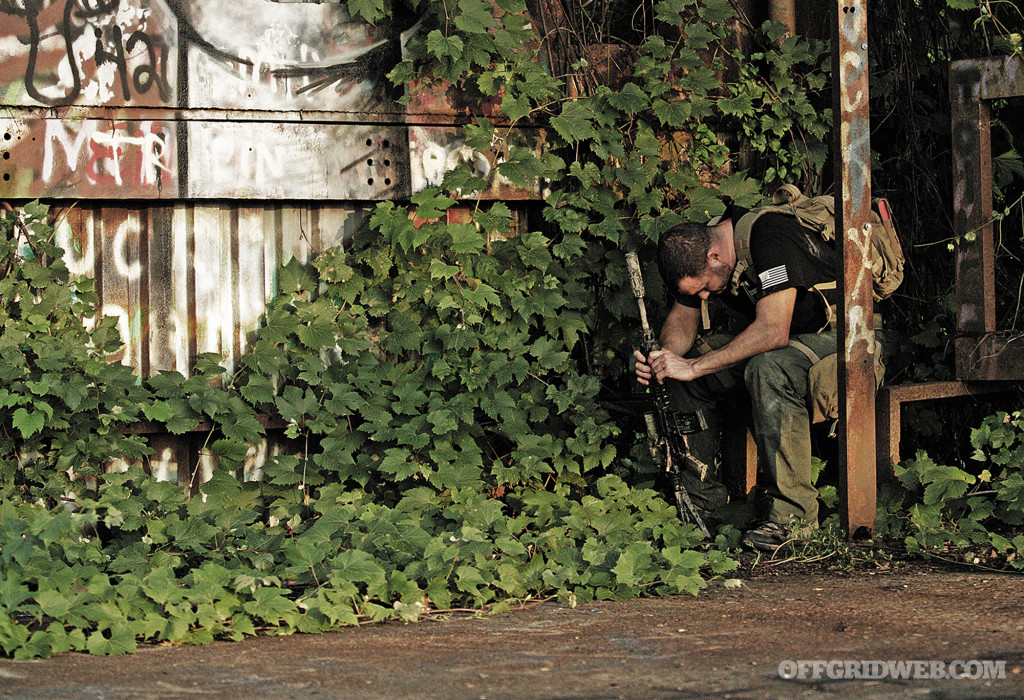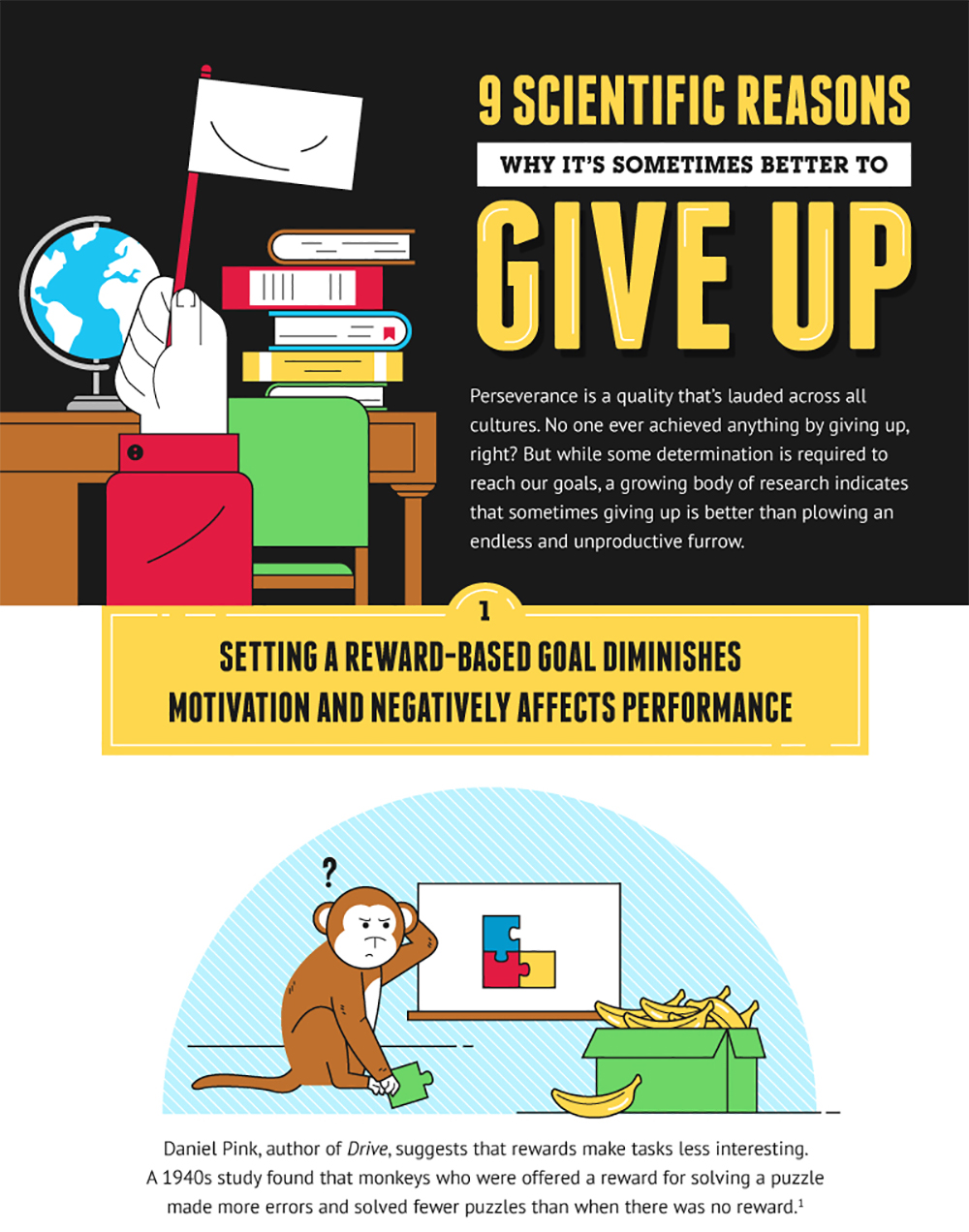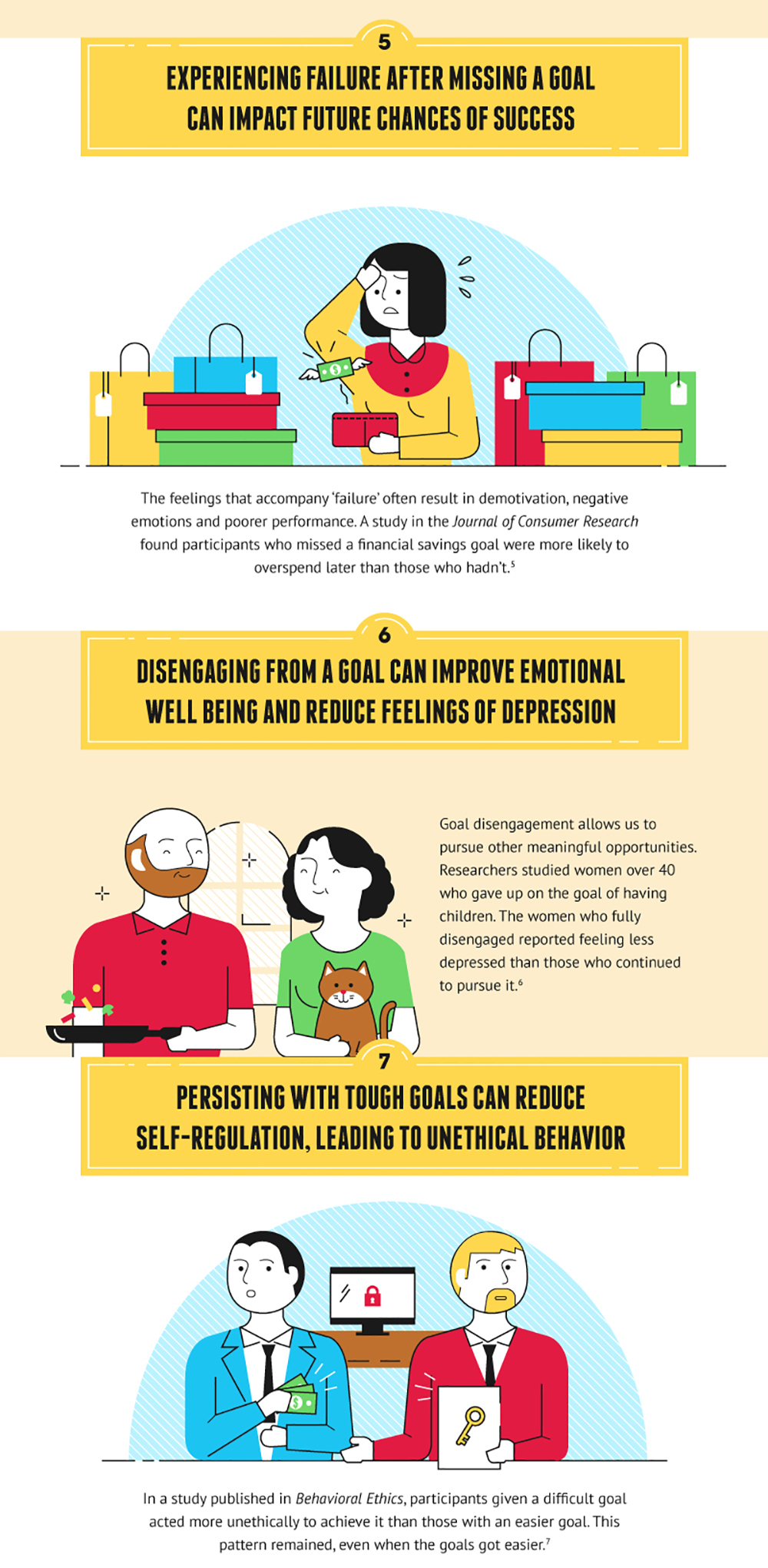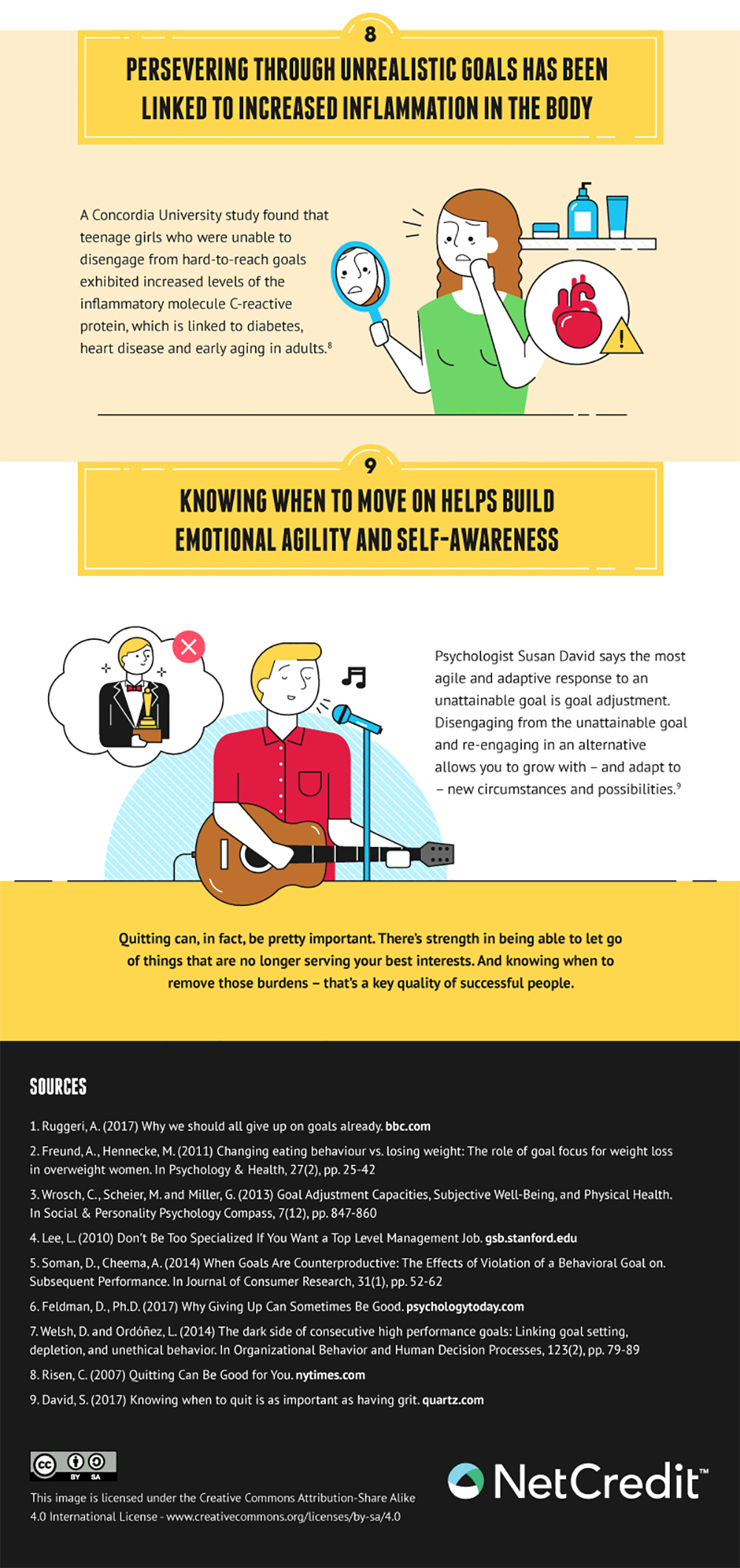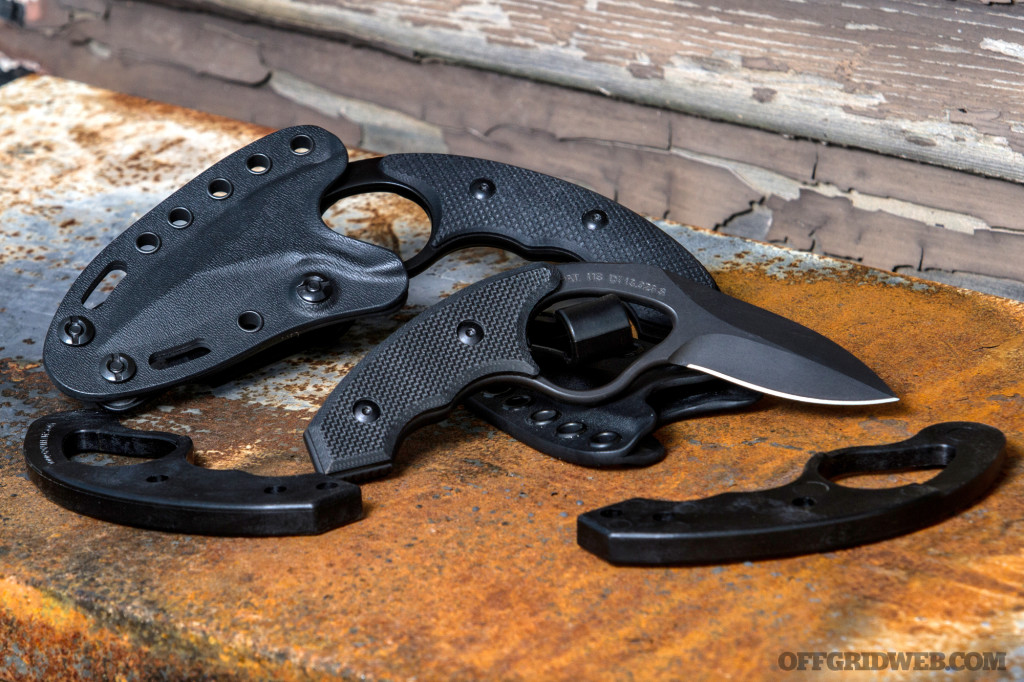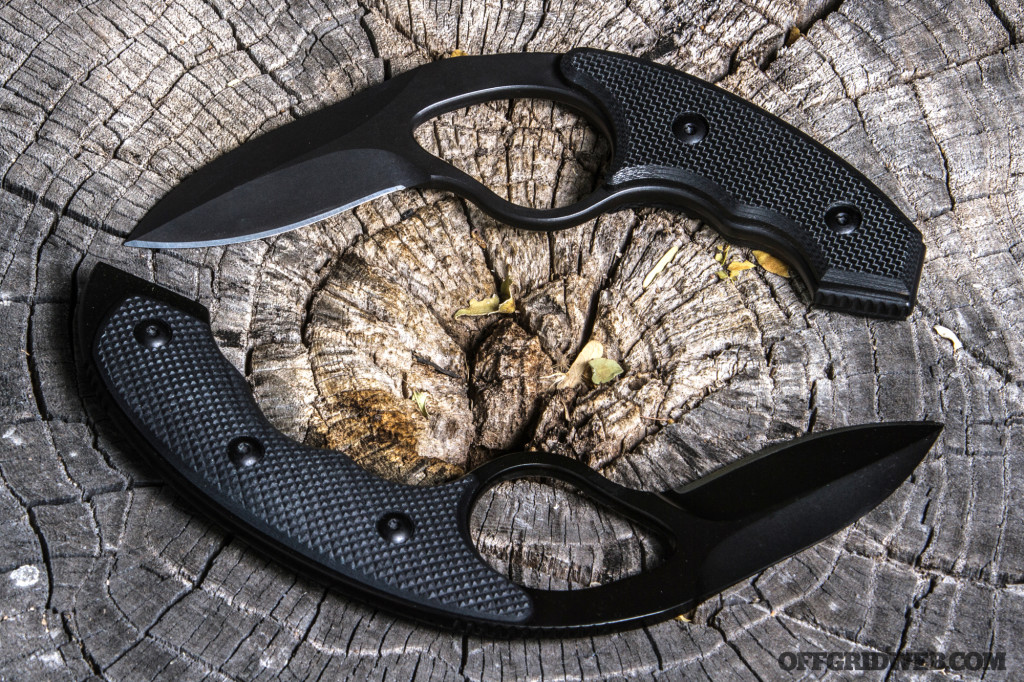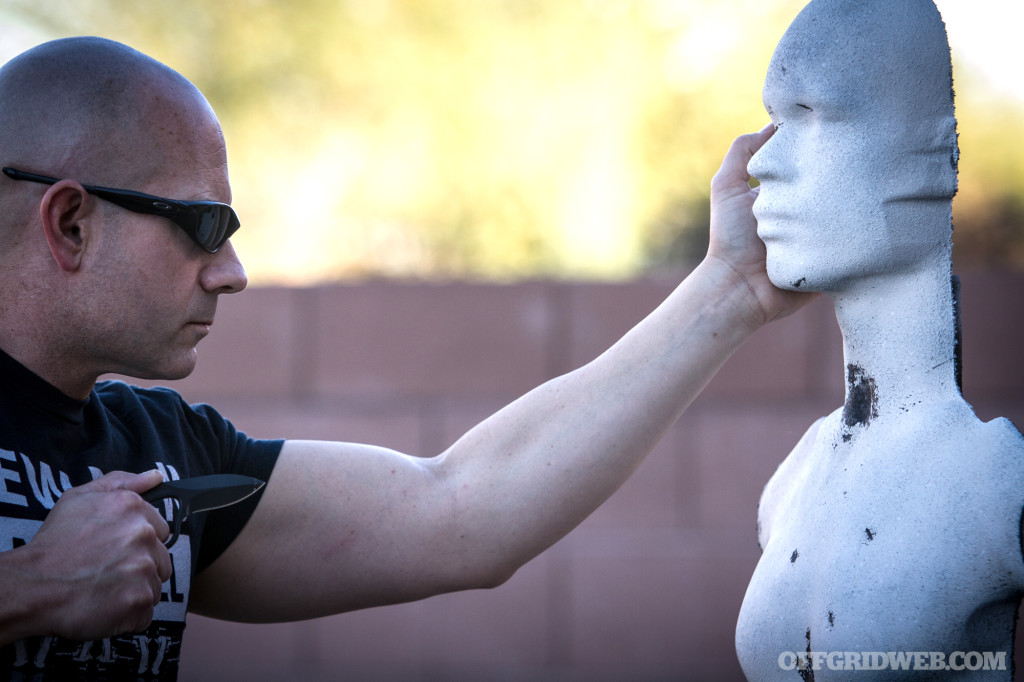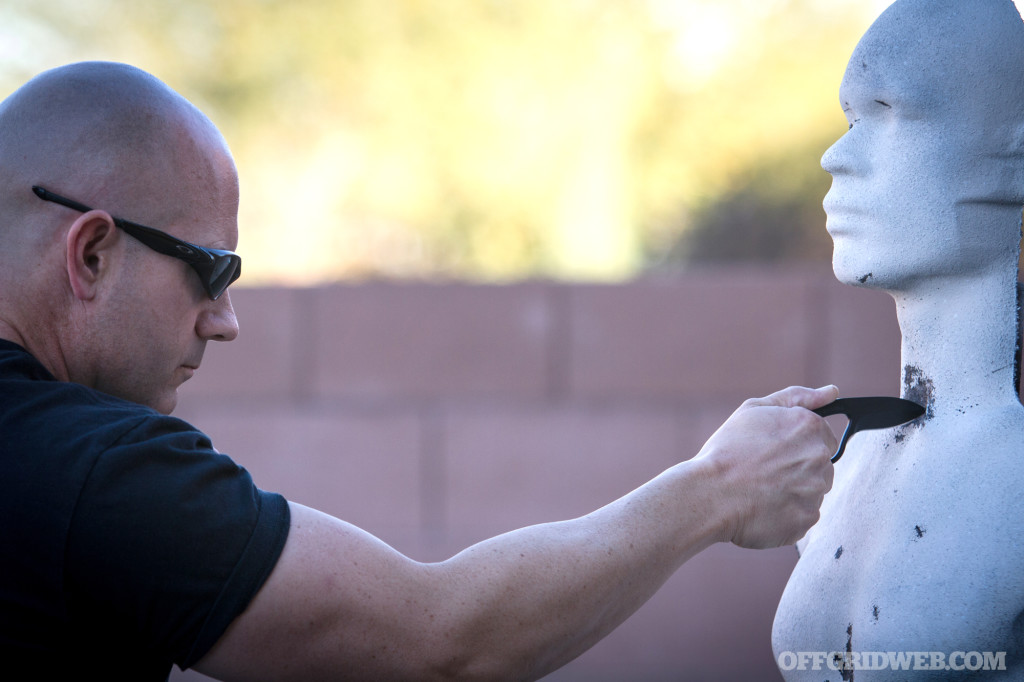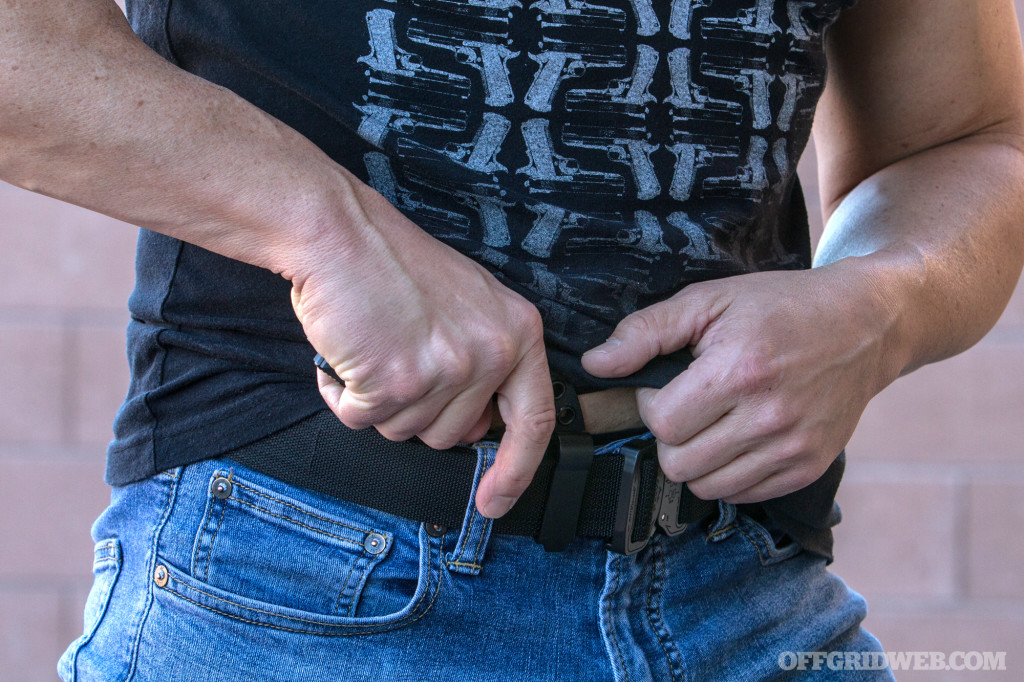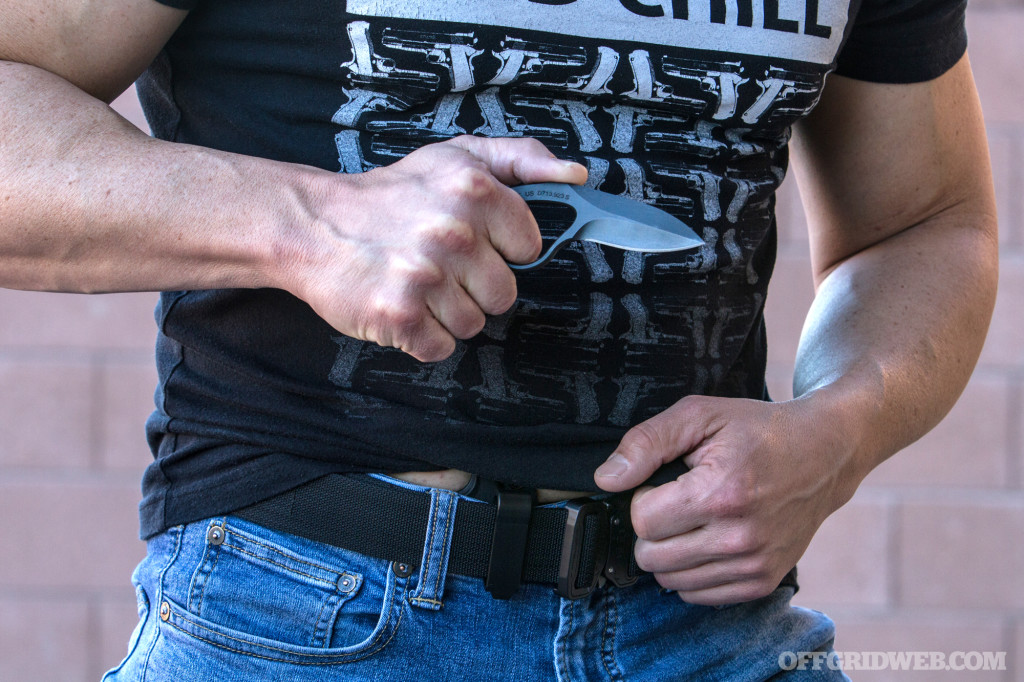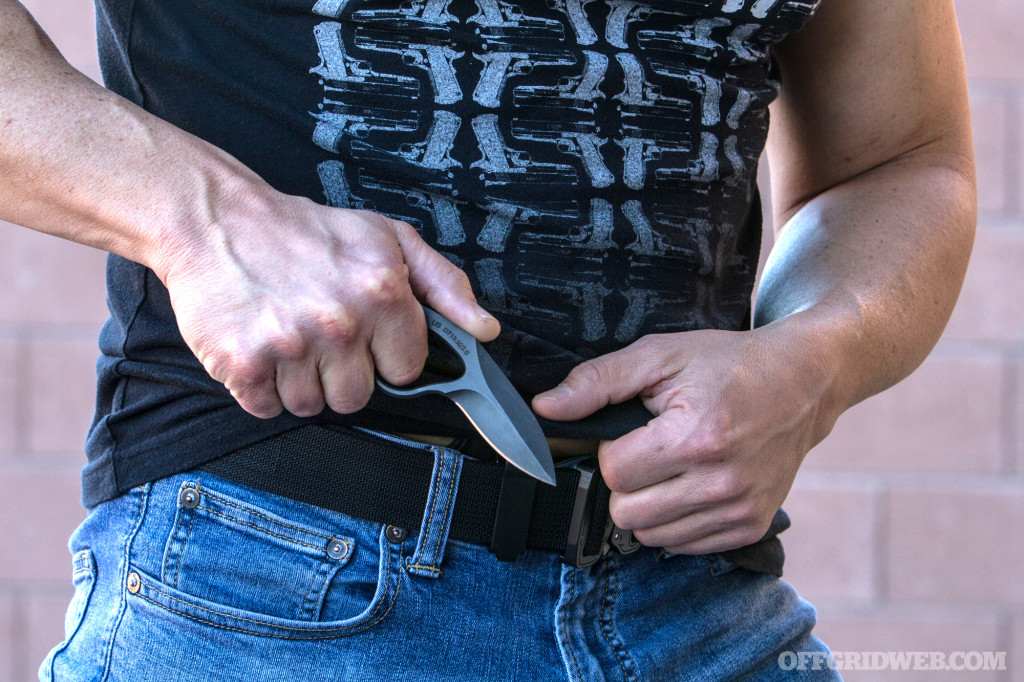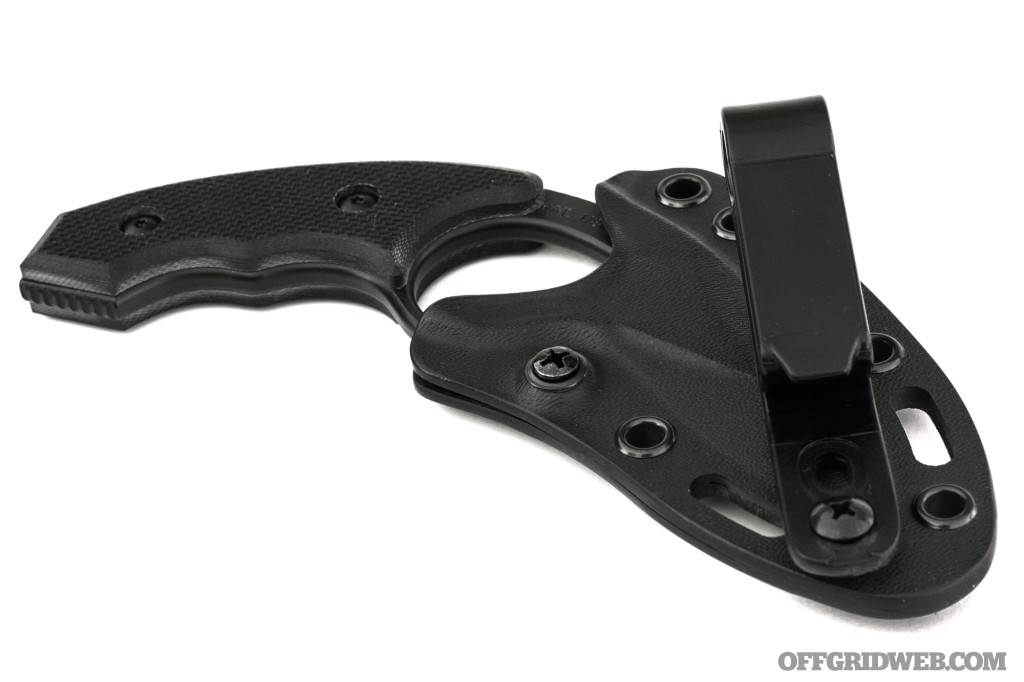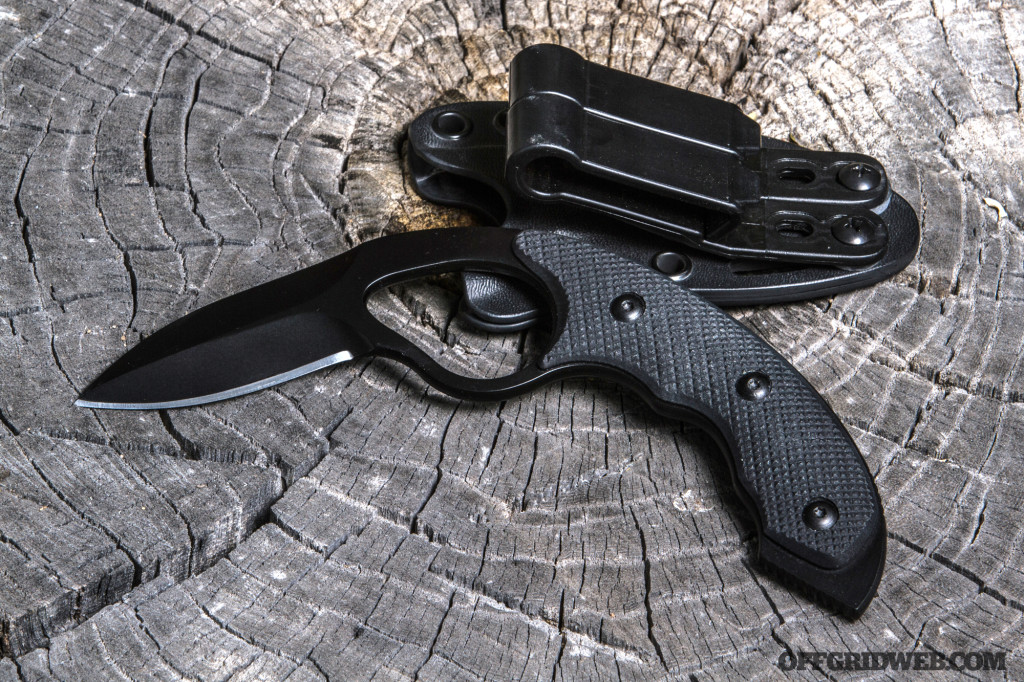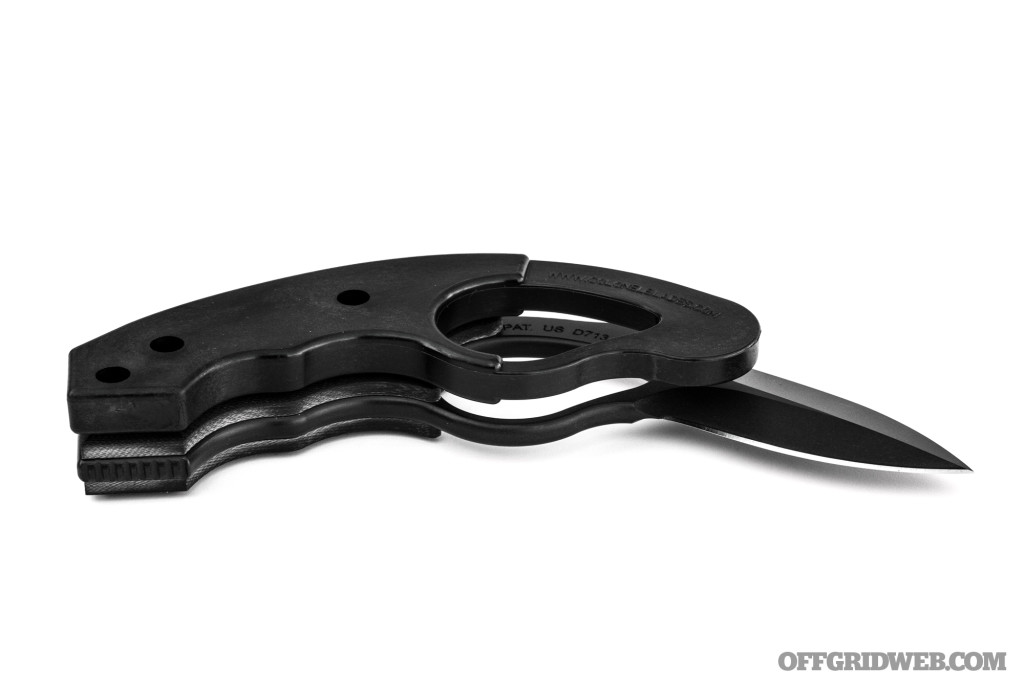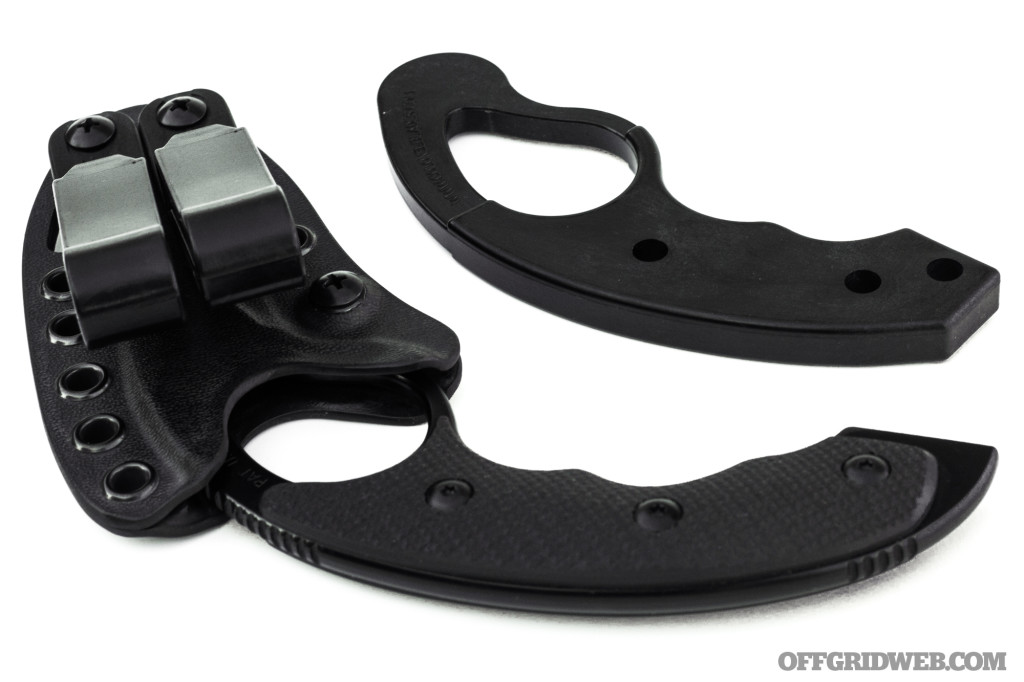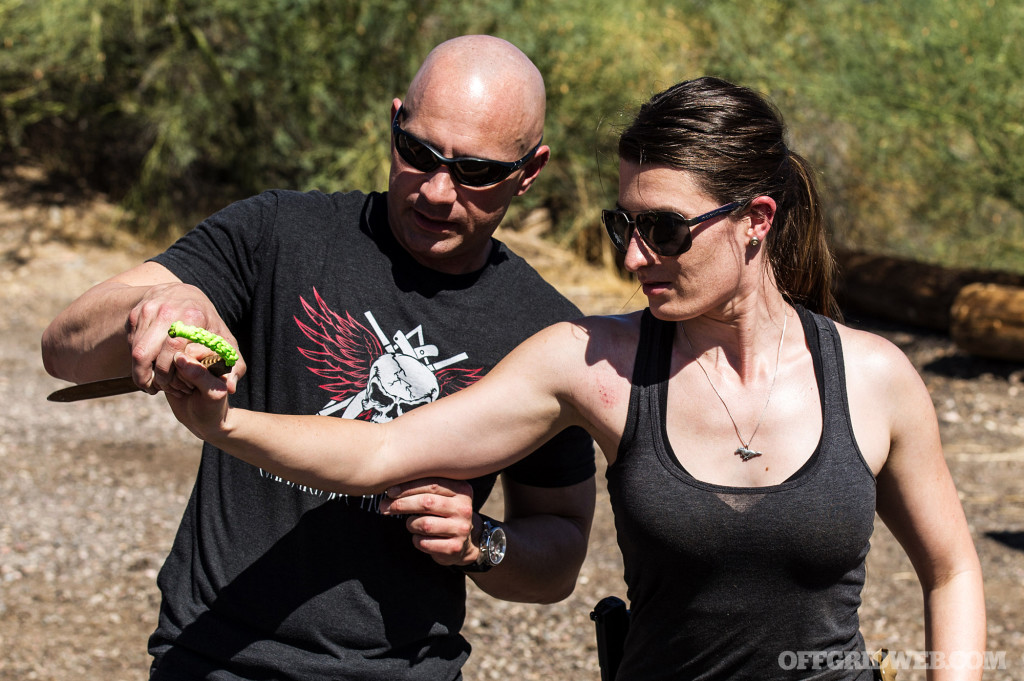Illustrations by Lonny Chant
The ISIS flags. I had seen them many times on the news and in magazines. The black-and-white flags speak of God and his messenger, but the deeds done underneath them are never holy. Countless times, I’d seen pictures of this flag from the safety of my home, but this was the first time I had seen them with my own eyes. Fluttering from poles affixed to fast-moving skiffs, the black flags signaled these men were no ordinary pirates. They weren’t just coming to rob us of our possessions or hijack the ship for ransom — they were coming to take our lives.
For this stomach-churning installment of RECOIL OFFGRID’s What If?, the authors are continuing the new story style — explaining what they would do if they were personally caught up in the emergency situation. This oceanic survival story isn’t some nautical nonsense about people with no survival background, muddling through an emergency. This is how we would personally plan for an international trip, and how we would react when things go horribly wrong. From our skills and survival tactics, to our plans and reactions, we hope you learn even more from this change in the format, and we hope you never need to deal with a situation like this.
The Scenario
- Situation Type: Ocean liner hijacking
- Your Crew: You and your spouse, ship’s crew, and approximately 150 other passengers
- Location: Horn of Africa, Gulf of Aden
- Season: Summer in the southern hemisphere (during our winter season)
- Weather: Clear; high 100 degrees F, low 80 degrees F
The Setup: You’ve been saving for years to take a dream cruise with your spouse that lasts 44 days. It disembarks in Barcelona and makes stops in the Mediterranean before venturing through the Suez Canal into the Red Sea. It then proceeds to several more stops along the Arabian Sea and Bay of Bengal before reaching its final destination in Singapore. You plan to have an unforgettable summer vacation together to celebrate your anniversary and see parts of the world you’ve never been to before.
The Complication: Approximately 20 days into the cruise when you’re nearing the Horn of Africa, your vessel succumbs to a coordinated hijacking by several skiffs. You’re awakened around sunrise to an announcement. The captain comes on the loudspeaker, telling everyone that there are “unfriendly” vessels on the starboard and port sides and to stay in our rooms. The plink of bullets on the side was very noticeable.

You peer out of your stateroom window, and see a skiff flying the ISIS flag and a pirate with a rocket-propelled-grenade launcher. He takes aim in your direction and fires. You see the flash and dive to the other side as the rocket detonates in a stateroom two decks above your own. The pirates, four or five in each of the 25-foot boats, continue firing and try to board the ship. The captain then orders all passengers to assemble in an interior lounge for safety, and the ship accelerates in what appears to be an attempt to ram or outrun the assailants. While getting dressed and readying to leave your stateroom for the lounge with your spouse, the ship unexpectedly slows down.
You realize the ship has been boarded. Being that this is ISIS and not pirates, this is the worst possible scenario as the motivation is likely not ransom, but hostages and executions. There’s no way to tell how many total hijackers there are, or if more are coming.
The New Plan: If you were home you’d call 911 and grab your gun. But you’re in an ocean liner off the coast of countries that are poverty-stricken, generally unfriendly toward Americans, and your mobile phone has no reception. How do you deal with the hijacking? Do you hide? Attempt to communicate an SOS somehow? Do you take on the hijackers? Try to escape in a lifeboat?
Former Federal Officer: Hana Bilodeau’s Approach
Prep
Most vacations don’t span over 44 days with multiple international destinations, but because of the uniqueness of this trip, I’d divide my pre-trip preparation into three categories: legal documents, intelligence on countries visited, and ship facts. Planning for a vacation in advance will hopefully help navigate any issues that may arise later.
Legal documentation: Before departing, I’d check with the cruise company to see what legal documentation they require to embark and disembark the ship. I’d then check our passports to ensure the issue date exceeds six months prior to the ship departure date and that expiration dates remain legal throughout the entire stay abroad. This is due to the six-month validity passport rule. Most countries won’t permit a traveler to enter the country unless the passport is set to expire at least six months after the final leg of travel and was issued at least six months prior to arrival. Next is compiling a list of stopover destinations the ship will make throughout the trip. Using this list I also check the U.S. State Department website to see which countries require additional Visas or documentation to enter.
Once I have all the necessary government travel documentation, I make multiple paper copies of the documents in the event our passport is lost or stolen during the trip, so we will at least have some form of identification. I would be sure to carry one paper copy of my passport with me at all times and store each additional copy in different, secure locations while traveling.
I would also schedule a pre-trip doctor visit to obtain any necessary vaccinations and documentation thereof based on area of travel. Due to the fact that medical facilities will be limited at best, I would also purchase short-term international travel insurance that would cover any medical expenses outside the U.S. for a minimum of two days and a maximum of three years, and up to a million dollars in coverage. I’d keep copies of this coverage, vaccination documentation, and my U.S. insurance card along with our passports and other vital information.
Intelligence gathering: I’d first buy a paper map showing areas to be traveled and keep it in my luggage. I would also spend some time researching each country we’ll visit and or travel through during our 44 days at sea. This would include checking the U.S. State Department’s Consular Information Sheets for each country and current travel advisories for this part of the world, which is also on the State Department website. Next, I’d also familiarize myself with the culture, religions, and customs for each location to learn what formalities that, if not followed, could disrupt a peaceful visit.
Other contacts I’d want info on are the closest American resources for each international waterway that our ship passes through. Lastly, find contact information for the FBI and the U.S. Coast Guard for any of the U.S. ports as well as the U.S. embassy and local law enforcement contacts for all international ports of call. I would make a list of each and also make paper copies of each and store them accordingly.
Utilizing the cruise company’s website I would gather facts on the ship to include:
- Year Built: 2011
- Year Refurbished: 2016
- Gross Tonnage: 66,084
- Length: 784.95 feet
- Beam: 105.646 feet
- Maximum Draught: 24 feet
- Stabilizers: Yes
- Cruising Speed: 20 knots
- Guest Decks: 11
- Total Decks: 16
- Electric Power or Voltage: 110, 220 AC
- Guest Capacity: 1,250 (Double Occupancy)
- Staff Size: 800
- Guest to Staff Ratio: 1.567 to 1
- Nationality of Officers: European
- Nationality of Staff: International
- Country of Registry: Marshall Islands
I’d also research the on-ship security and procedures, specifically noting if they have a security force and onboard holding facility. I would then identify and make a copy of the ship’s evacuation plan. Next I’d check the cruise liner’s prohibited items list. Then onto gathering info on the ship’s infirmary to see what type of medical emergencies they’re equipped to handle and their treatment protocol if a passenger needs higher medical attention.
Aside from the aforementioned documents, my emergency-preparedness packing list would include the following if allowed onboard:
- First-aid kit
- Flashlight
- Leatherman tool
- Knife with blade under 4 inches
- Battery-operated portable radios for ship communication if there’s no cellular service
- Spare batteries for radios and phones
- Battery packs, cell phone charger (if international is not part of the cell plan, it’s an additional cost, you can either use your phone on roaming or purchase an additional international plan).
- Electrical conversion and outlet adapter for each country
- Laptop, charger, and accessories
- Air card for internet and phone card (an air card is a cellular modem that attaches to the USB port of a computer and serves as a gateway to the internet antennas to improve cell reception)
On Site
Once onboard, first on the agenda would be checking into our stateroom, identifying where our stateroom is located in relation to the other important parts of the ship, and getting acclimated with its amenities. This includes unpacking and securing our personal documents. Next I’d develop an emergency plan for my spouse and I in case we’re separated to include multiple meeting locations and modes of communication. We’d then want to familiarize ourselves with the ship’s layout. Before doing so, stop by the information desk and grab a couple copies of the ship’s map/layout.
With map in hand we’d head off to visit the most pertinent locations so we’re better acquainted with where they are in relation to our cabin and the quickest ways to access them if needed during an emergency. These locations include:
- Customer service or information center
- Ship security office
- Infirmary
- Locations of fire extinguishers
- Locations of life vests and rafts
- Kitchen
- Captain’s quarters
- Engine/electrical room
Crisis
And just like that, the captain makes an announcement that “unfriendly” vessels are on the port side of the ship and that passengers should assemble in the interior lounge for safety. Once confirmed that the ocean liner has actually been taken hostage, immediate action is imperative. Based on the history of ISIS, human life is of the utmost concern. Once the passengers have gathered in the interior lounge I’d spearhead organizing a mission plan.
First on the agenda is identifying any able-bodied passengers, preferably with military, law enforcement, or leadership experience. Establishing an operable militia of ship patrons to combat the hijackers is imperative. Organization and quick decisive action on behalf of the passengers is necessary to prevent the hijackers from becoming too embedded in the ship. Keeping the hijackers at bay and out of the interior lounge is essential.
Next, I’d ask all passengers to pool anything that could be used as weapons. Things that could be useful are kitchen utensils and knives, large blunt objects, fire hoses, extinguishers, rope, etc. Next is setting up a perimeter and using the ship’s infrastructure as protection. One could do this by identifying things that could be used as cover/concealment and formulating a safe ground away form the threat.

Having a leader amongst the passengers is essential to maintain order, security, and communication. It’s important that all passengers understand and agree to the plan of attack, convincing them that compromising that plan could disrupt the security of the group as a whole and cost the lives of everyone. The goal is to have all passengers in agreement. If that doesn’t work through negotiations (strength in numbers), the passengers who refuse to conform will be separated from the majority to make sure there isn’t internal hostility.
Once the militia has been established, it’s all about dividing and conquering areas of concern. I’d take the most experienced passengers and send them to locate the ship’s security forces to obtain any weapons kept onboard for such incidents. If possible, combine efforts with the security forces. Then it’s on to locate and protect the captain, the engine room, and radio transmitting equipment.
If able to locate the captain, the goal is to immediately contact the U.S. Coast Guard, the closest embassy, and friendlies so an evacuation plan can be immediately implemented. The captain should be the person on board with the most working knowledge of the ship itself, so securing his or her safety is important. If there’s firepower locked and stored on the ship, the captain is usually the only one with access. Make sure to provide as much pertinent information to the rescue efforts as possible, such as the number of passengers and location, estimated number of hijackers, and how and where the boat was compromised.
If possible, I’d send out another team out to identify the location and number of hijackers on board. Their secondary mission would be attempting to secure food and water. Being in the middle of the ocean, in the summer, and with extreme temperatures, hydration may quickly become an issue.
Success in this situation is reliant on remaining vigilant as a group, being prepared to fight, having a plan, keeping the hijackers at bay and maintaining strength in numbers until rescue efforts arrive.
Survival Expert: Tim MacWelch’s Approach
Prep
To get ready for a trip of this duration, here are four areas where I wouldn’t skimp.
Hit the Books: Research is an important aspect of preparedness, and I’d take my time studying for our trip. From the areas we’d stop to the areas we’d be traveling through, I’d learn about the people and their customs. I’d also take a hard look at the cruise company and the ship itself. Learning about restricted items would be vital, as well as my communication options and the predicted weather for the season. And of course, I’d be worried about the troubled waters we’d be sailing through. I’d read up on the Somali pirates off the coast of Africa and the pirates on the Indian Ocean. Modern piracy is still big business, and some estimates put the worldwide loss at $16 billion per year.
Get a Satellite Phone: Communication can be critical in a survival situation, so buying or renting a satellite phone could be the most essential expense in the preparation for our trip. I’d do my homework on the models, features, and even the satellite networks. Just like your mobile phone, certain networks have better coverage in certain areas. A cheap sat phone may be found as low as $300, while a great one may cost $1,300. These higher-end units (like Iridium) have a greater number of satellites in the network. This offers the user global coverage, even in polar regions. In either case, it’s a small price to pay for a greater margin of safety in the remote corners of the world.
Set Up a Contact: We’d definitely establish a regular contact at home. This is someone to check in with who’d have our itinerary and instructions on what to do if we became uncommunicative. Just as it wouldn’t be smart to head out into the wilderness without telling anyone where you were going or when you’d be back, it’s not too bright to travel without checking in with someone. A trusted family member or friend would be our contact. I’d also reach out to the U.S. State Department and create a contact there.
Pack for the Trip: For a month-and-a-half voyage through countries great and small, I’d bring the clothing and footwear you’d expect a tourist to wear. And everything we’d be legally allowed to bring. We’d also pack lighting such as headlamps and flashlights with spare batteries. A charger for the sat phone is a must as well. Cash in small bills would be a must, in U.S. dollars and other common currencies, though the foreign bills would be easier to pick up abroad than at home. Stateside currency exchanges aren’t likely to have currency from every country. Tactical pens, belts with heavy buckles, and other simple travel-friendly tools for self-defense might be the best we’d be allowed to take. In some places, even pocketknives are forbidden. Double check local regulations on items such as these as well as the ship’s list of any prohibited items.
On Site
After the long flight, and once we’d finally reached Barcelona, it’d be a great relief to finally board the cruise ship and settle into our room. Before we board the ship we’d get some bottled water and nonperishable food to stock our cabin. While this may seem strange to ship staff, you never know when there can be a hiccup in your food and water supply, even on a hedonistic cruise ship.
Then, after a bit of rest, we’d take a look around to get familiar with the vessel, looking for areas where we could potentially hide or fortify. Any weapons from the ship, conventional or improvised, would be on my mind as well, since we could bring very little for self-defense with us. I’d ask for a tour of the kitchen, if allowed, just to see where the big knives are kept. And once our voyage is underway, we’d see some sights with our group at each port of call, do a little shopping, and add a few more foods to our personal food pantry.
Crisis
Here’s the part where we find out if there’s such a thing as a “no win” scenario. With the ISIS flags flying, I’ll expect no quarter to be given in the coming altercation. These mass murderers are typically religious zealots who cannot be swayed by logic or reason. And it would be likely that they should have no qualms about massacring every man, woman, and child onboard. I’d expect a distress call to have gone out as soon as the unfriendly craft approached the ship, but there’s no guarantee that this occurred. This force may have an insider who could disable communications right before the attack. While it’s likely that the cruise ship company has a standard operating procedure for pirates boarding the ship to get ransom money, the company probably doesn’t have a game plan for religious nuts trying to kill every person on the ship.

I’d go along with the captain’s orders to gather in a central spot as the ship tried to speed away from assailants who were firing on us from a small craft, but, with the small cruise ship lurching to a halt, I’d have to make a very dire decision. Would I join the group or avoid them? Rushing down the halls, bumping into uninformed people, I wouldn’t know if the ship had stopped because it was under new command or it stopped because the captain had been instructed to stop and negotiate if pirates boarded. Whichever is true, these hijackers flew flags that showed they weren’t the typical impoverished pirates looking for money. And the passengers gathered in one place would make a spectacularly easy shooting gallery.
With the sudden stopping of the ship, I wouldn’t gather with the other passengers. I’d treat this like the active shooter scenario it is, and embrace the “run, hide, fight” mantra. If no distress call went out, it could be hours (or even days) before the maritime security forces in the area respond to the attack. And in just a few hours, dozens of motivated men could have every single one of our heads in a pile on the ship’s deck.
So what’s on a cruise ship that could act as a weapon? You’re not going to go up against an AK-47-wielding attacker with a rolled-up magazine or a butter knife you stole from the captain’s table. And with fire axes in short supply on the modern cruise ship, your choices are limited. So in this grim scenario, the best weapon at hand would be the weapon sitting in a drawer in our stateroom — the satellite phone.
We would barricade ourselves in the room and start calling our contacts. After notifying the State Department contacts we’d made before the trip, and making sure that the message would get to the multinational maritime task force for the region, we’d prepare to fight back if the door was breached. Perhaps some unruly passengers would buy some time for the anti-piracy task force of the region to organize, mobilize, and arrive on site. Using speed, surprise, and intense violence — we might be able to wrestle one rifle from an unskilled attacker. Or perhaps we could pick off a straggler who might be searching the ship alone. Then we’d finally have a proper way to fight back. Either way, I’m not dying on my knees.
Conclusion
In the past, piracy on the East African coast was much worse than it is today. Thanks to years of multinational naval operations, there’s been a major reduction of piracy in the Indian Ocean. But the narrow sea passage in the Gulf of Aden has been favored by pirates for centuries, and in recent years, pirates have targeted scores of commercial vessels there (in 2008, more than 100 ships were attacked). This list of attacks includes several incidents involving cruise ships and private yachts.
Having done my homework before this trip, I would’ve known that in March of 2017, two-dozen pirates in two skiffs attacked and hijacked an oil tanker just off the northernmost town in Somalia. It was the first hijacking of a large commercial vessel since 2012. After boarding, the armed men turned off the ship’s tracking system and demanded a ransom. A subsequent firefight with the local maritime police force and some tense negotiations ended the hijacking without ransom (largely because the pirates were afraid to get on the wrong side of the powerful Somali businessmen who had hired the ship).
So what’s the takeaway here? Well, if you want to travel the world, you have to accept the fact that you’ll be facing some serious risks and hazards. And while most trips end happily enough, some do not. Do plenty of research before you head out into the world. The U.S. State Department website is loaded with sound travel advice, and more importantly, travel advisories and warnings about dangerous areas. Criminal activity against travelers, terrorist activity, military conflicts, and many other hazards are explained and updated on their website: http://travel.state.gov. Give it a look. And although a cruise liner that goes slowly and close to shore off the coast of Somalia has certain risks, the potential for hijacking exists everywhere.
More From Issue 24
Don’t miss essential survival insights—sign up for Recoil Offgrid’s free newsletter today!
Read articles from the next issue of Recoil Offgrid: Issue 25
Read articles from the previous issue of Recoil Offgrid: Issue 23
Check out our other publications on the web: Recoil | Gun Digest | Blade | RecoilTV | RECOILtv (YouTube)
Editor’s Note: This article has been modified from its original version for the web.


